This review was provided for free, but Bosch and I split the cost of flights and hotel so I could visit their headquarters in Irvine, Califonia to spend some time with a few different ebike models. My goal is to be transparent and unbiased with you, this video and writeup are not meant to be an endorsement of Bosch or Bianchi products. I welcome your corrections, additions, and feedback in the comments below, and the Bianchi electric bike forums.
Observations:
- The Bosch Performance Line Speed motor that this ebike uses offers great power, sensitivity to shifting, and is smaller and lighter than ever, but it’s also louder and more power hungry than the rest of the Bosch ebike motor line. The high capacity PowerTube 625 battery pack helps to extend range and meet the power needs. These premium parts do increase the price and this battery is kind of long and sharp so not as comfortable to take along as a second battery for long range riding.
- Even though the E-Omnia is a first generation electric bike product from Bianchi, I consider the drive system to be very proven and reliable. I have tremendous respect for Bianchi, which started in Milan Italy in 1885 and is still a recognized leader in the traditional bicycle space! This is a more premium ebike product, Omnia actually means “everything” in Latin and that is represented by such a feature rich product with high attention to detail. It blends the capability and toughness of a hardtail cross country mountain bike with the utility, efficiency, and safety features of a premium city commuter. I love that they chose the Bosch speed motor because it will allow riders to reduce commute times, keep up with automobile traffic, and provide a fun sporty feel. Both wheels are connected by 15mm thru-axles that can withstand the speed and pressure of high performance riding.
- The Bianchi E-Omnia T Type speed pedelec is available in North America, and there’s a lower speed version for European markets that uses the Bosch Performance Line CX motor instead of the Performance Line Speed.
Pros:
- It’s actually built to handle higher speeds and a bit of trail riding (especially if you swapped the tires, and it appears it can run tubeless for reduced weight). Note the reinforced frames with thicker steer tube, top tube, downtube, and chainstays. They chose Boost hub spacing which provides a wider and stronger spoke bracing angle, and both wheels are connected with thick 15mm thru-axles vs. 9mm skewers. Both models are designed around a triangle (high-step and mid-step) verses a deep step-thru.
- It’s wonderful to have three frame size options to improve fit, and I feel that Bianchi chose the adjustable angle stem very well. It’s super thick so it won’t come loose as easily, and provides a logical and protected mounting point for the display panel.
- When riding at higher speeds, and potentially going off-road, comfort becomes increasingly important. The spring suspension fork they chose offers preload adjust (to match rider weight) as well as compression and lockout. It connects with a tapered steer post, which is what even higher end air suspension forks use (so it’s upgradable). The saddle felt great, the suspension seatpost made a big difference, and the added weight of the bike seemed to dampen vibration like on a motorcycle.
- Sometimes a seat post will slide down into the seat tube slowly over time, especially if it’s a suspension seat post… so I like that they chose a strong wedge seat post clamp and added markings to the side of the post for easier repositioning!
- Excellent tire choice! The Schwalbe Supermoto is recognized for reliability and grip quality. These tires bring puncture protection, reflective sidewall stripes, and provide good comfort and stability due to their size. The 29″ wheel diameter provides a lower attack angle to smooth over cracks and bumps while the 2.4″ width increases air volume for comfort. Note that the demo bike had tires with different branding and a thick rubber contact patch, like you’d see on a moped. The specs were still 29″ x 2.4″ and they were still reflective.
- Visibility enhancements include the reflective tire stripes, high visibility color option (white), standard integrated lights (front and rear) as well as additional LED accent strips (60 LEDs on the seat stays and 42 LEDs on the steer tube). The bike is unique and easier to spot in traffic as a result.
- Lots of little extras that were done well including the adjustable length kickstand (positioned well so there’s no pedal lock and it’s inside the left chain stay so no heel strike), wide aluminum alloy platform pedals, bottle cage bosses, and cafe frame lock for the European build (I believe it uses the same key as the battery lock).
- Functional plastic fenders and unique off-road inspired armor mud guards (design seems to vary by geography). Note the little beak on the front of the bike and long downtube shield (which was not present on the demo model). The rear fender appears to be two parts for the US version. Extra attention was paid to the aesthetics of this model with the tight spoke pattern, and all-black hardware (except for the suspension fork stanchions, which are silver).
- Bianchi chose to use one of the nicer ABUS keysets for their battery lock, which can be matched to aftermarket security locks. While it takes additional time and money to order one of these matched locks, it reduces the clutter and wasted time of having to carry additional keys.
- I have some gripes about the design and functionality of the rear rack, but it does look nice and keeps weight as low and close to the rear wheel as possible. It’s sturdy because it’s welded directly to the bike frame, and it’s paint matched.
- Excellent weight distribution with a mid-drive motor and downtube-integrated battery pack. The motor casing is made from magnesium to be light weight, and the battery pack sits as low as possible towards the bottom bracket. Overall, despite being a little heavy, the bike handles very well in my opinion.
- Beautiful internal cable, wire, and brake line integration. There’s less chance of snags, pinches, and kinks because they limited the exposure. The rear wheel speed sensor is integrated into the disc brake rotor mount vs. being tacked onto the left chain stay and requiring a spoke mounted magnet… it’s clean and durable.
- Very capable 180mm hydraulic disc brakes from Shimano. They provide a decent mechanical advantage over the larger 29″ wheels and bring adjustable-reach levers to provide easy use for riders with different sized hands.
- Amazing drivetrain, about as good as it gets for ebikes I’ve reviewed! You get 12 gears with a huge 10 to 51 tooth spread vs. typical 11 to 34 tooth. The derailleur has a one way clutch that increases tension (reducing kickback and chain bounce), and the high gear trigger shifter provide two-way interaction so you can use your thumb to shift up and down and keep your index finger on the brake lever.
- Upgraded narrow-wide tooth chainring provides protection against chain drops when riding fast and on bumpy terrain. This is a part that I usually see on high-end mountain bikes, and it reduces the need for a chain guide which would add weight. Instead, there’s a single side aluminum alloy chainring guard which doubles as a minimalist bash guard and pants protector (so your pants won’t get dirty touching the chain).
- The Bosch motors used for this ebike are excellent in terms of power, drive modes, shift detection (protecting your chain and sprockets), and high pedal cadence support (over 120 RPM). They are also compact and lightweight at just 6.3lbs vs. 8.8lbs on older models, in part due to the reduced physical size and use of magnesium.
- I appreciate that they used a lightweight black plastic battery cover for the PowerTube 625 and not metal. This decision saved weight, money, and makes it easier to replace between the two bikes (and possibly some of the other Bianchi ebike models). Note that the cover itself does not lock to the bike and seems to have an oversteer bumper built in, so it’s a bit vulnerable to cracking if you crash, and could be taken more easily at public bike racks…
- The PowerTube 625 is the highest capacity battery currently available from Bosch for electric bicycles. This pack offers increased range and probably lasts longer than the 500 watt and 400 watt options. For optimal use, keep the pack between 20% and 80% full, store it in a cool dry location, and maintain 50% charge if you aren’t using it for long periods so as not to stress the Lithium-ion chemistry. Bosch does extensive durability testing and supports their product designs for roughy seven years after being discontinued… so you can feel confident that the bike won’t become obsolete anytime soon.
- This ebike comes with the faster Bosch 4 amp standard charger! It makes perfect sense, given that it ships with a high capacity battery pack. In general, I like this charger because it’s fairly compact, lightweight at 1.5lbs, and quiet compared to almost all of the competition.
- I appreciate the stylized grips, stem surround (that appears to be angular and aerodynamic), and upgraded flick bell on the left. I like how the display panel can be angled from within the stem itself, so you’re not stuck with one screen angle based on how you set the stem itself.
- You get a Bosch Kiox display here, which is awesome because it has a built-in Micro USB charging port! This allows you to charge or maintain portable electronic devices while riding! It’s a great feature, given how much battery capacity this ebike offers. The display has a durable Gorilla Glass screen, is magnetically attached (for easy removal when parking or if you crash hard), can be semi-permanently fixed to the mount using a set screw, and shows a color light-adapting screen with lots of menus.
- In addition to the great number of screens on the Kiox, Bosch also has a smartphone app that offers a GPS map utility as well as some tuning features. I love the default readings on the Kiox however, as they provide more than most of the competitors including pedal stroke RPM, battery charge level percentage, calories burned, and heart rate (with optional heart rate monitor connected).
Cons:
- The bike looks unique, but the angular frame design and welded-on rear rack add to the overall weight. Many other ebikes have a removable rear rack for those who might want to ride off-road on the weekends and wear a backpack. The rear rack on this bike is also non-standard, so the tubing is thicker and might not work with some clip-on pannier bags. It doesn’t have bungee loops at the bottom and isn’t very deep, so the rack tubing is very close to the rear fender.
- I love that the bike has many integrated lights, not just a front and rear but also some smaller LEDs spread out on the steer tube and seat stays. This provides a larger visual footprint for safety… but the headlight itself if built into the frame and doesn’t turn as you steer the way that many other lights do. However, it was aimed very well and seemed to create a good focused pattern as shown in the video review around 14:50 time stamp.
- This model is part of the first generation of ebikes from Bianchi and could have minor issues that haven’t been worked out the way that second, third, or later generations would. That said, they are using premium drivetrain and drive system components, and are a highly respected bicycle brand that is over 100 years old.
- In order to support the three frame sizes and two color options that correspond to the different frame types (high-step and step-thru), as well as the premium Shimano drivetrain, hydraulic disc brakes, and premium Bosch motor and battery, the price point on this model is higher than average for a speed pedelec commuter at $6,000 USD.
- You might have noticed that the motor was producing more noise in the video review above. This tends to be the case for the most powerful motors, especially when pedaling at higher RPM speeds (spinning faster). Since this was a pre-production ebike, I cannot say whether the final builds will be quieter.
- These are minor considerations that could relate to the pre-production build, but the battery was a bit difficult for me to get out of the frame, it didn’t have a slap guard to protect the paint on the right chain stay, the stem seemed a bit long and used a shim to step down from 35mm to 31.8mm, and I didn’t see a max weight rating for the rear rack labeled or stamped anywhere. Hopefully it’s around 25kg (55lbs) as that’s fairly standard from what I see.
- The battery charging port is low on the left side of the frame, directly in the path of the left crank arm. This means that you have to bend way down to plug it in, the port is more exposed to water and debris while riding, and the cord could get snagged by the cranks if they are bumped while the bike is parked.
- The locking cylinder is mounted on the underside of the downtube vs. the side, so it can be difficult to see and interact with. It also requires that you insert and twist the key to keep it open while re-inserting the battery pack. The pack itself is fairly heavy at roughly 7.9lbs, so you’re using two hands to balance unlock and insertion, and I find it to be challenging… especially with an under mount design where the pack goes up into the downtube. This is a common complaint for me with the Bosch PowerTube mount and lock design.
- Be careful when lifting and transporting the PowerTube 625 battery because it does not have an integrated handle like the older PowerPack batteries. The 625 is pretty heavy at 7.9lbs and could easily get damaged if dropped, or really hurt your foot or nice flooring!
- This is a minor note, but the drivetrain does not cycle backwards. Instead, the cranks will freewheel backwards with a bit of resistance (so they don’t spin out of control if you slip off). The result is a drivetrain that is best serviced when the bike is in a stand. I like the ability to pedal backwards and have enjoyed it on some other current generation Bosch motors like the Performance Line for hub gearing seen on the Gazelle Ultimate C380. Perhaps Bosch will add this feature to all motors in the future?
- As much as I love the Bosch Kiox display panel, the control pad for it has buttons that require a bit of extra force when pressing and the screen readout is kind of small… that’s why Bosch used colors for the four levels of assist. This way, you can interpret data without having to focus in too much and get distracted trying to read. Consider the Bosch Nyon display as an upgrade if you want a larger display and some cool mapping views.
- When pedaling backwards, the drivetrain does not cycle (the chain does not go backwards). This means you probably need a bike stand to lubricate the chain and adjust the derailleur properly, as I would not advise flipping the bike upside down due to the weight and sensitive hardware on the handlebar such as the display. I do appreciate how quickly the rear hub picks up (additional pawls), and that there’s a bit of friction for back pedaling so the cranks don’t spin out of control. However, with the fancier rear hub, the bike makes a loud buzzing noise when coasting… as is the case with many higher end bicycles. Some people may find this to be annoying.
Useful Resources:
- Official Bianchi electric bikes website.
- Local Bianchi bike shops directory and map tool.
- Bosch drive unit comparison on the official Bosch website.

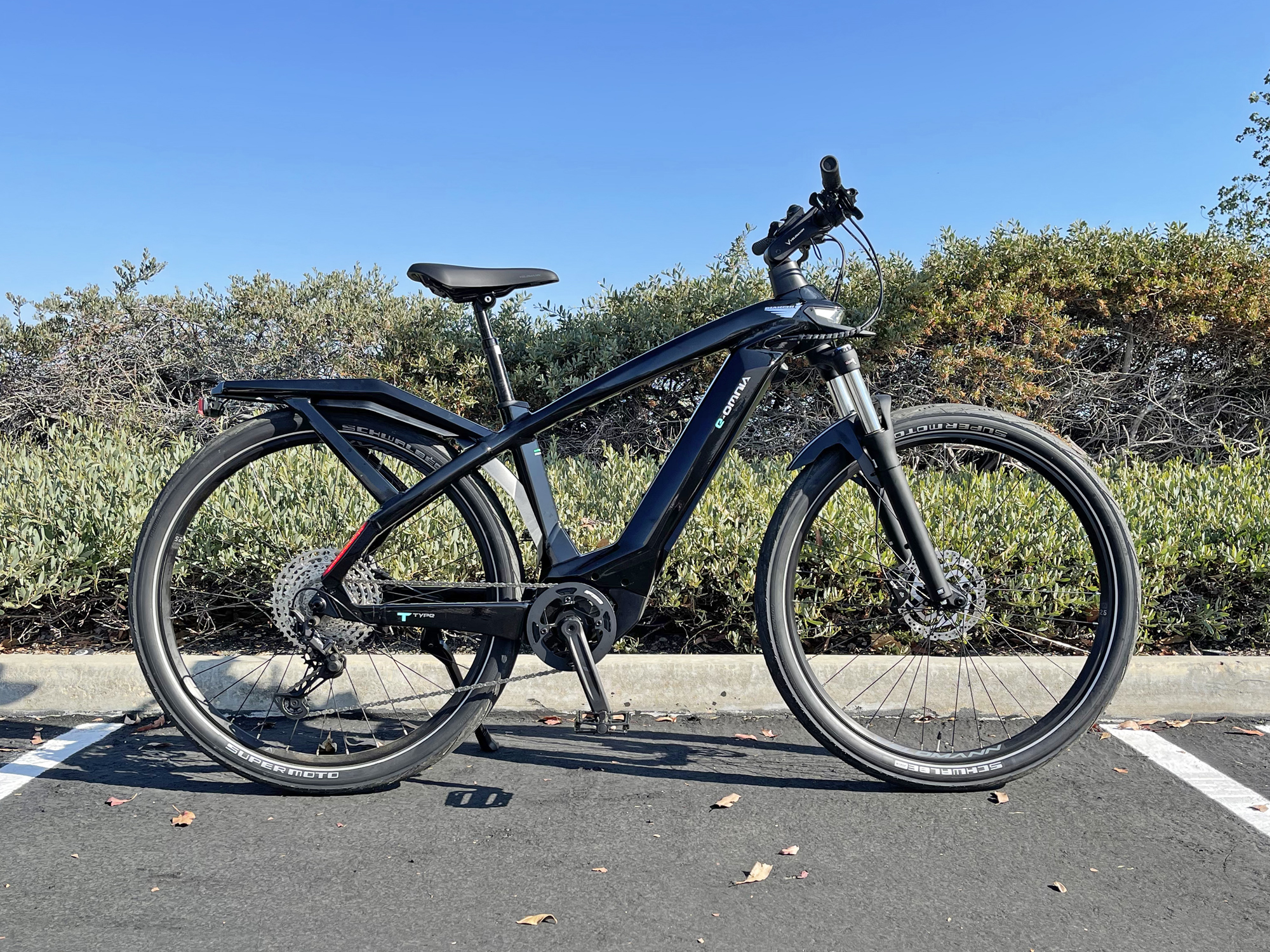

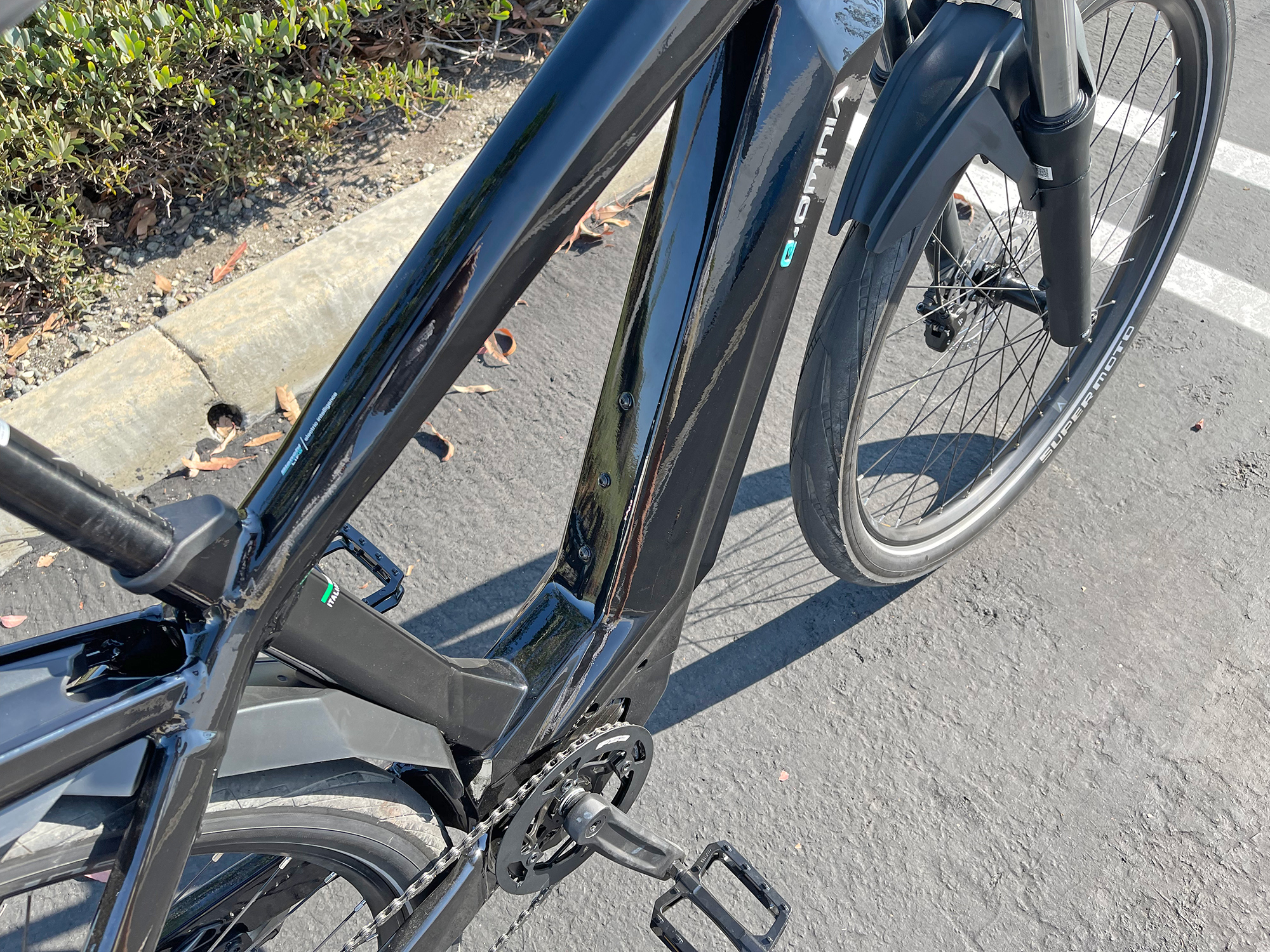

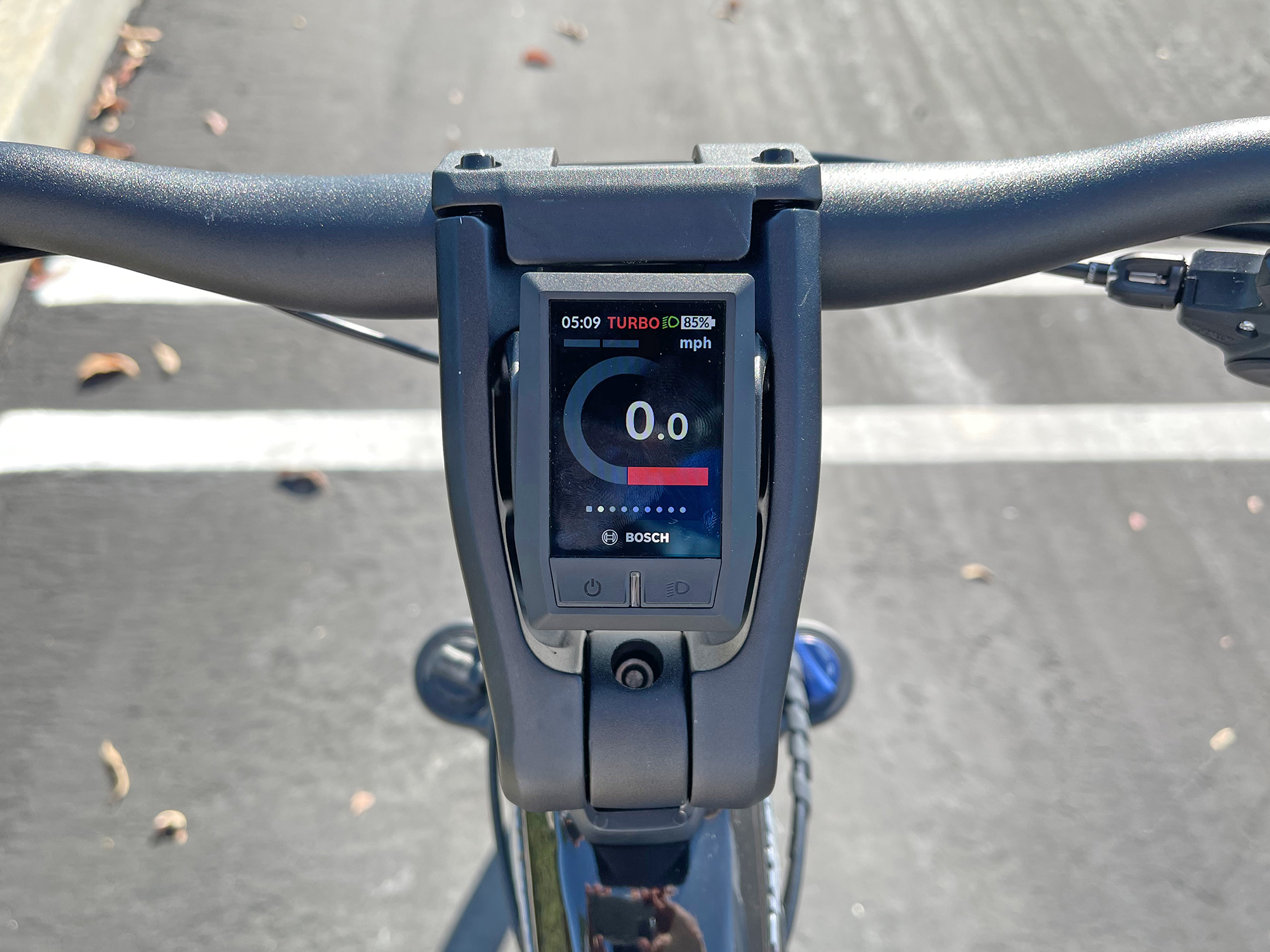
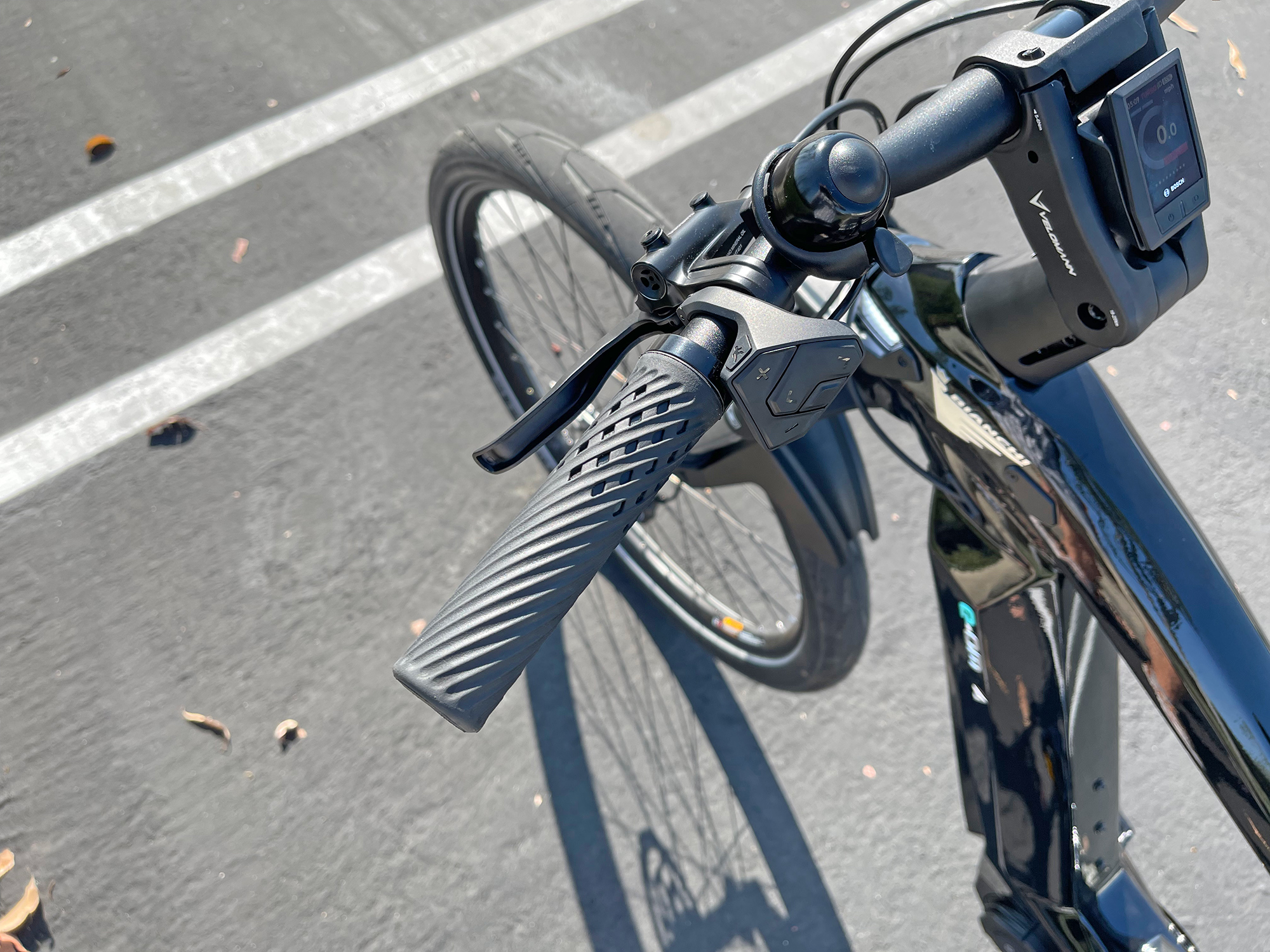

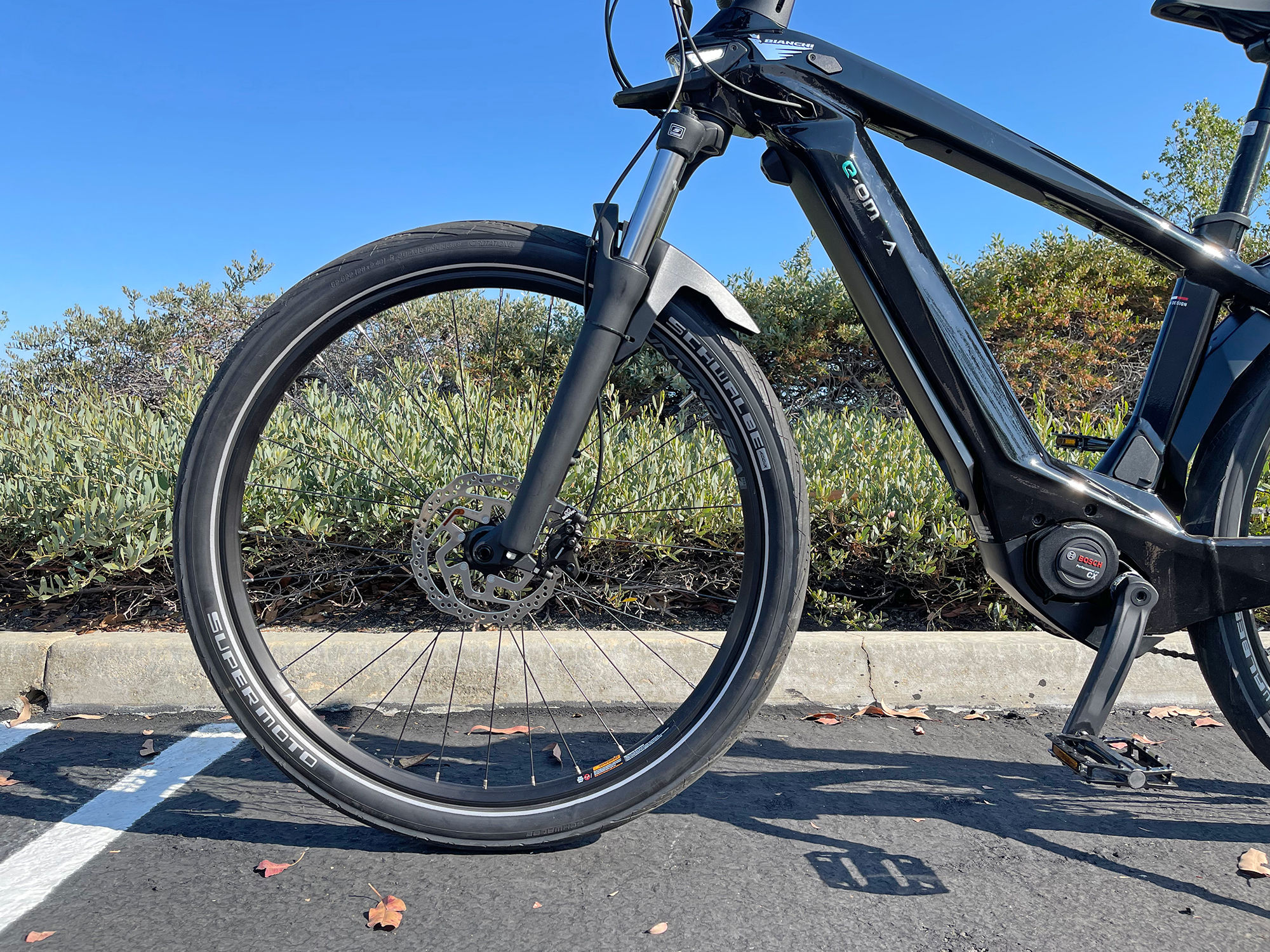
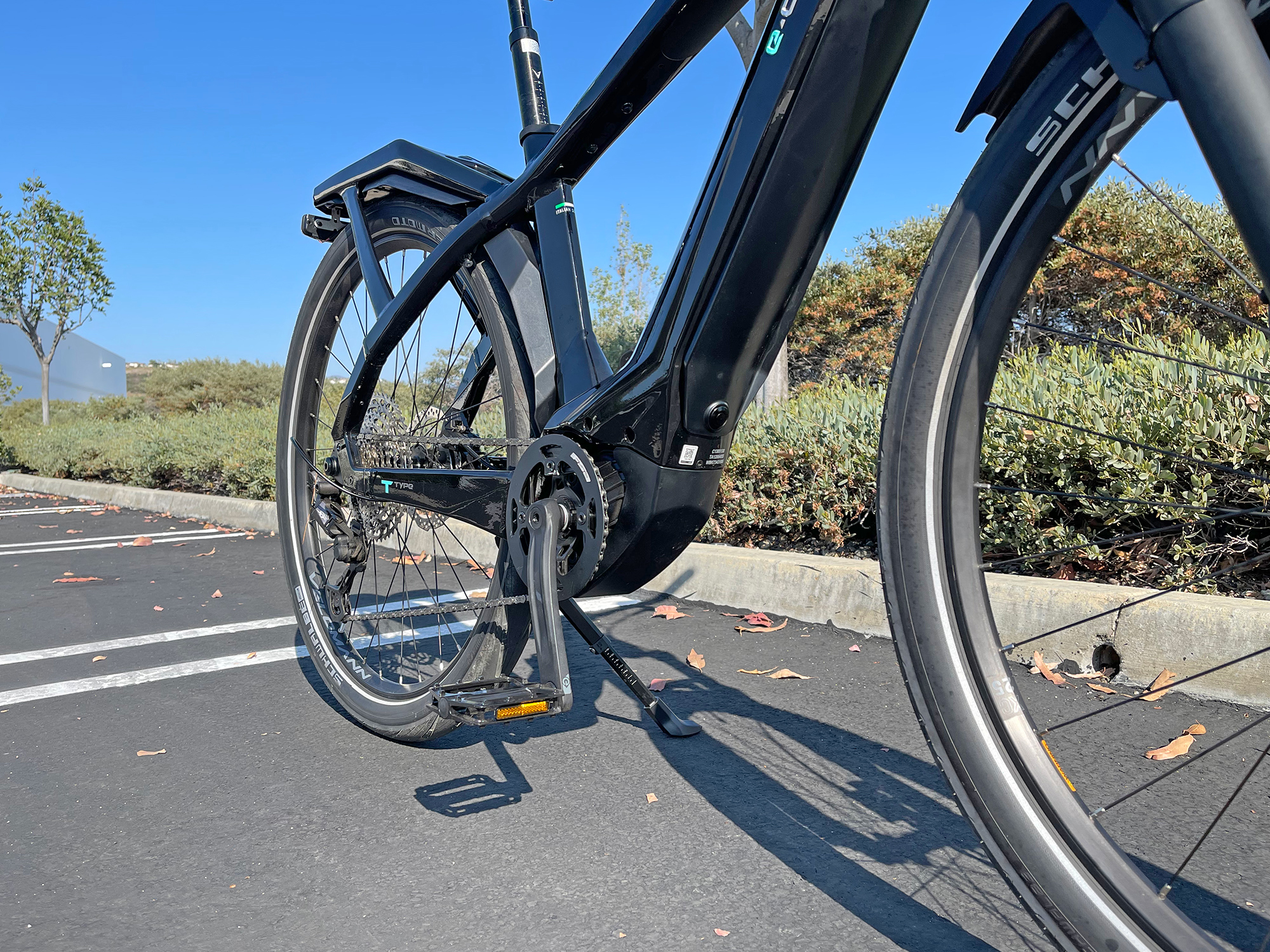
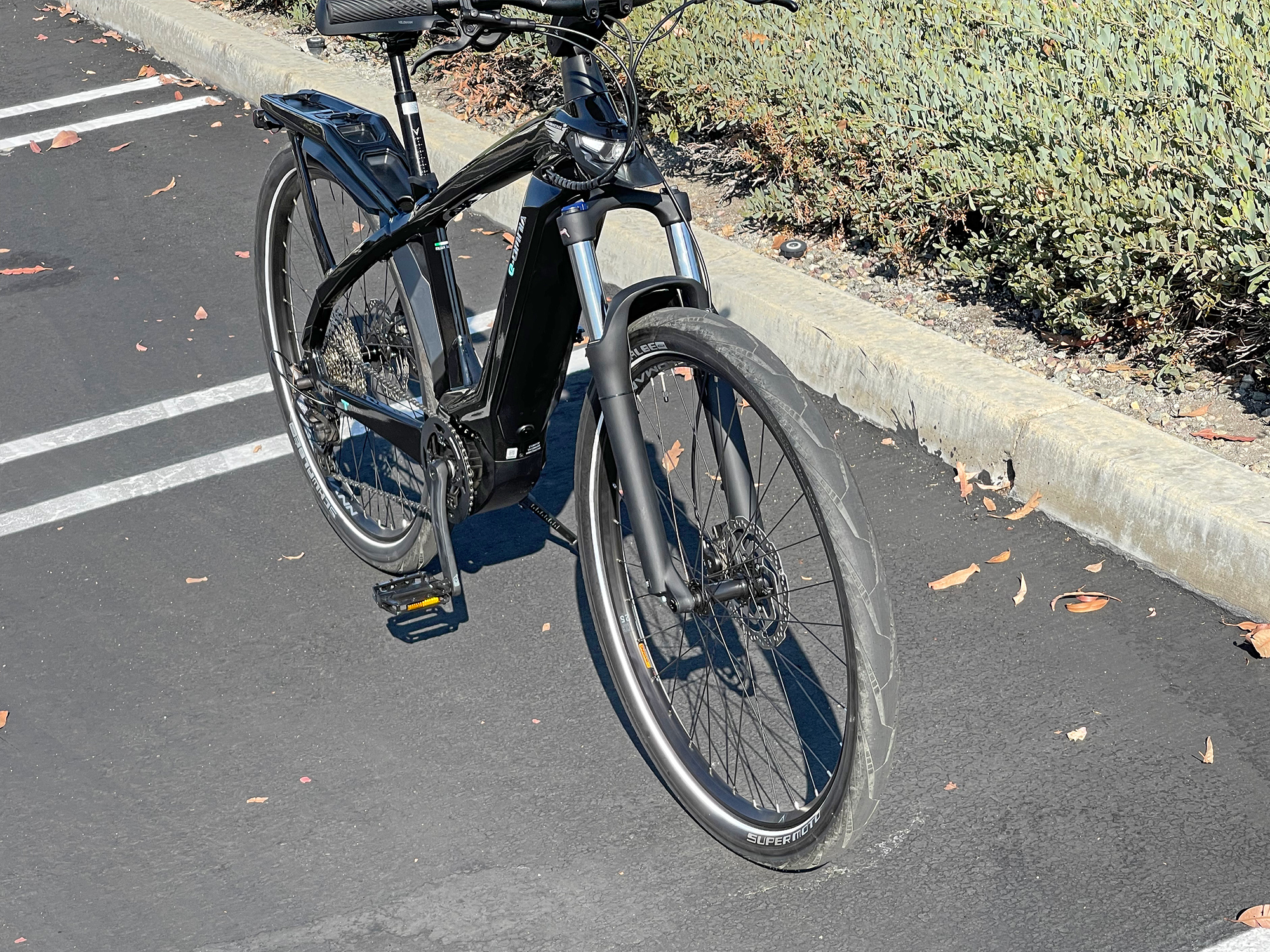
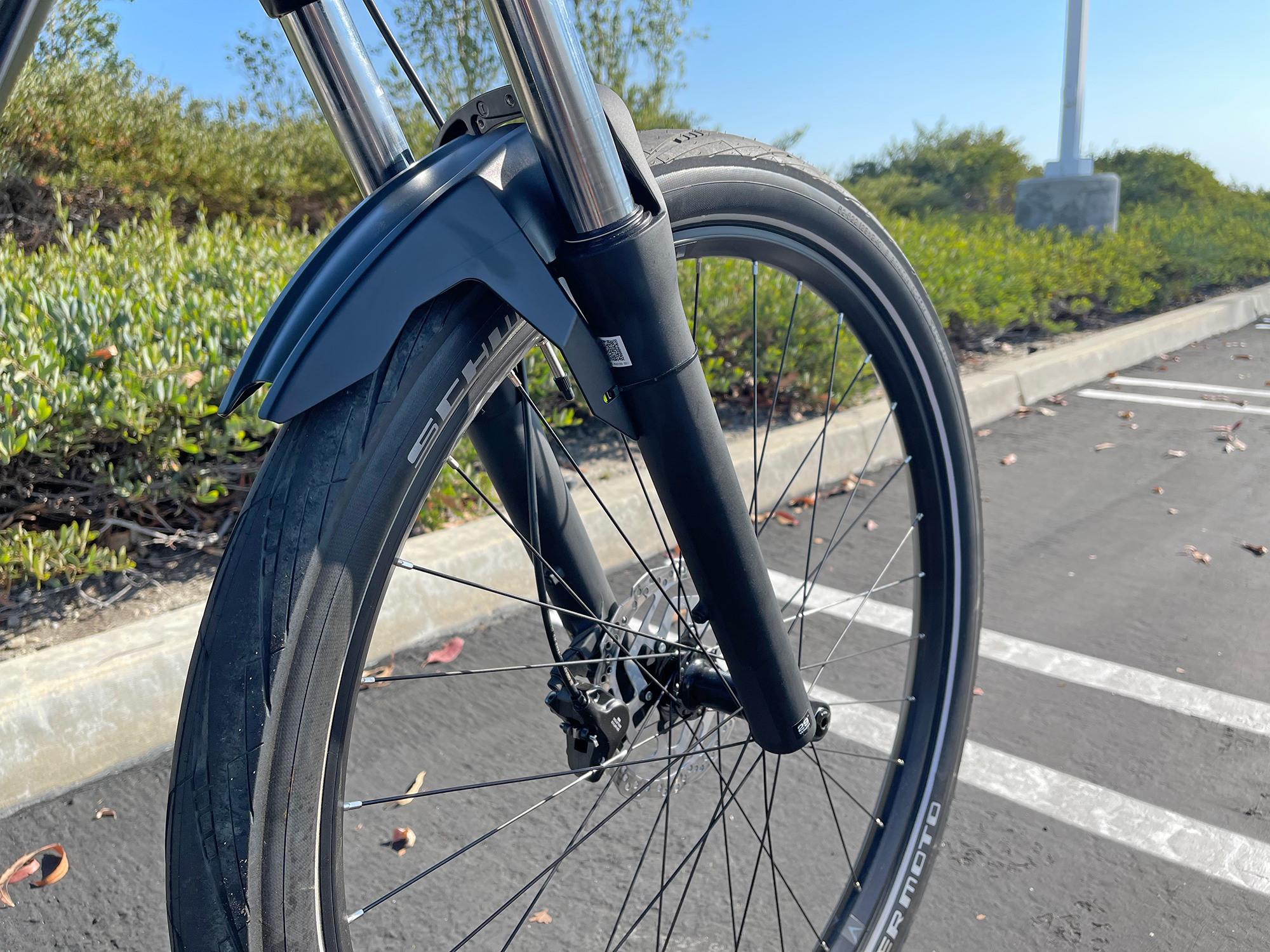
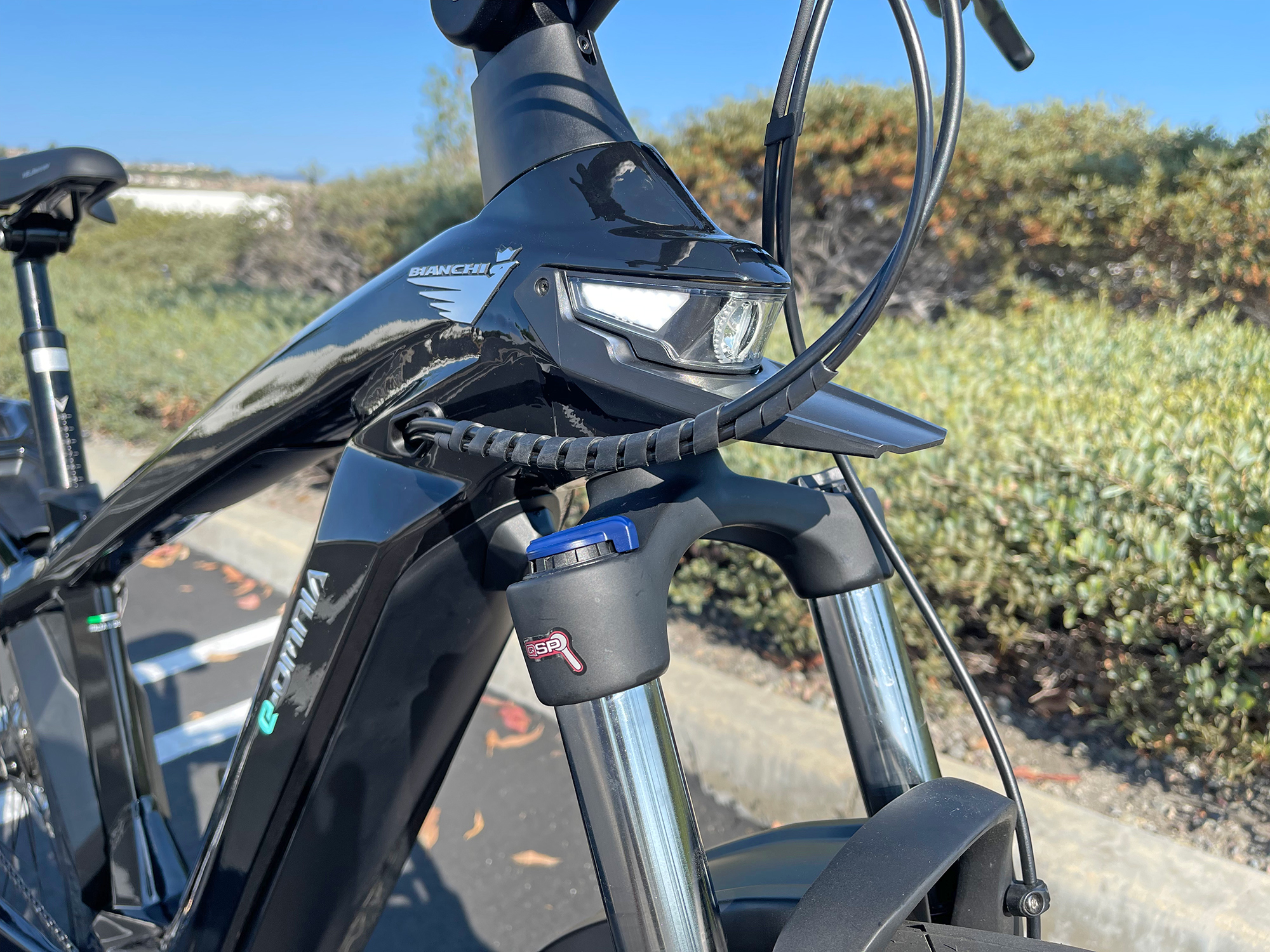
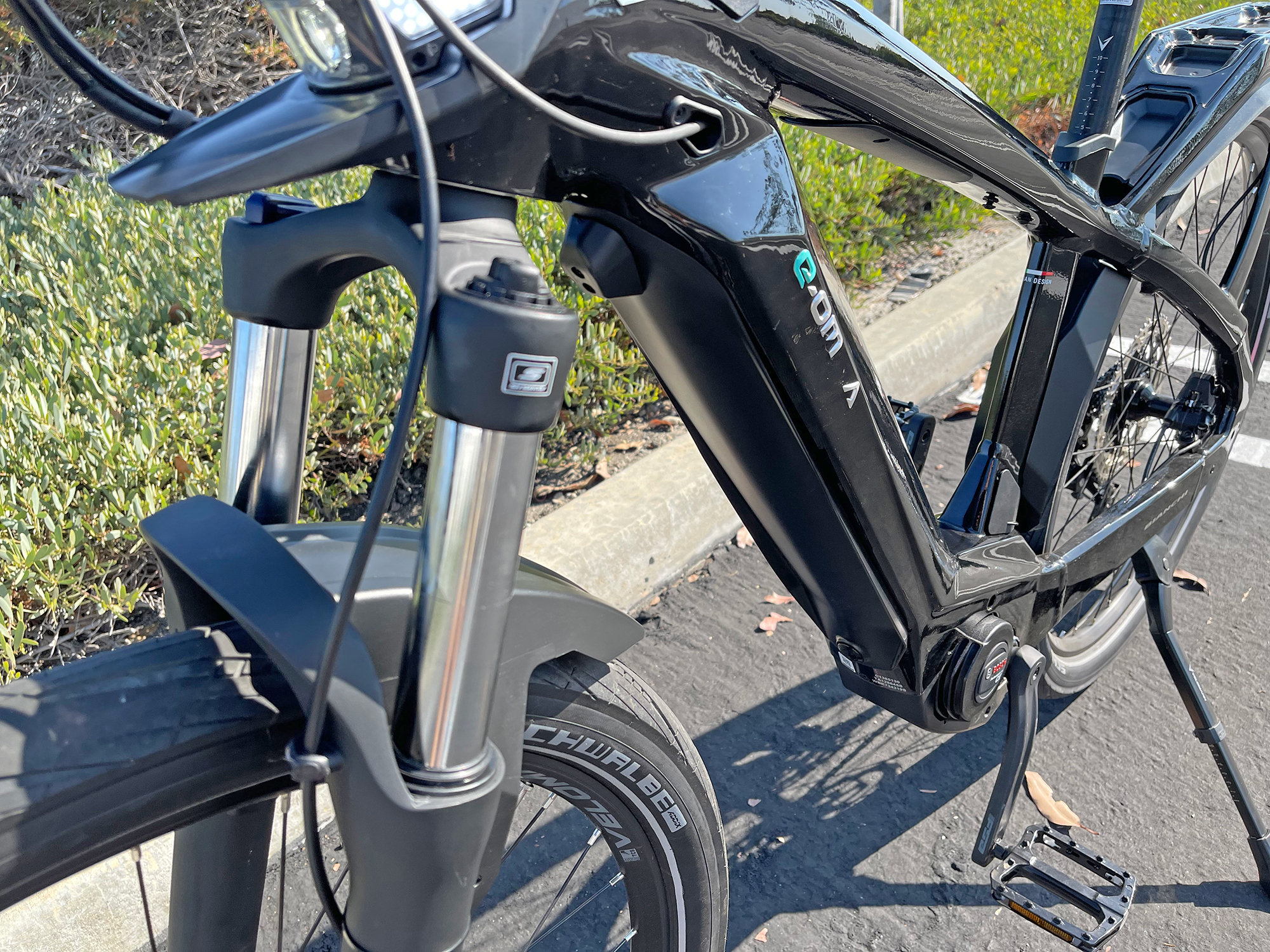

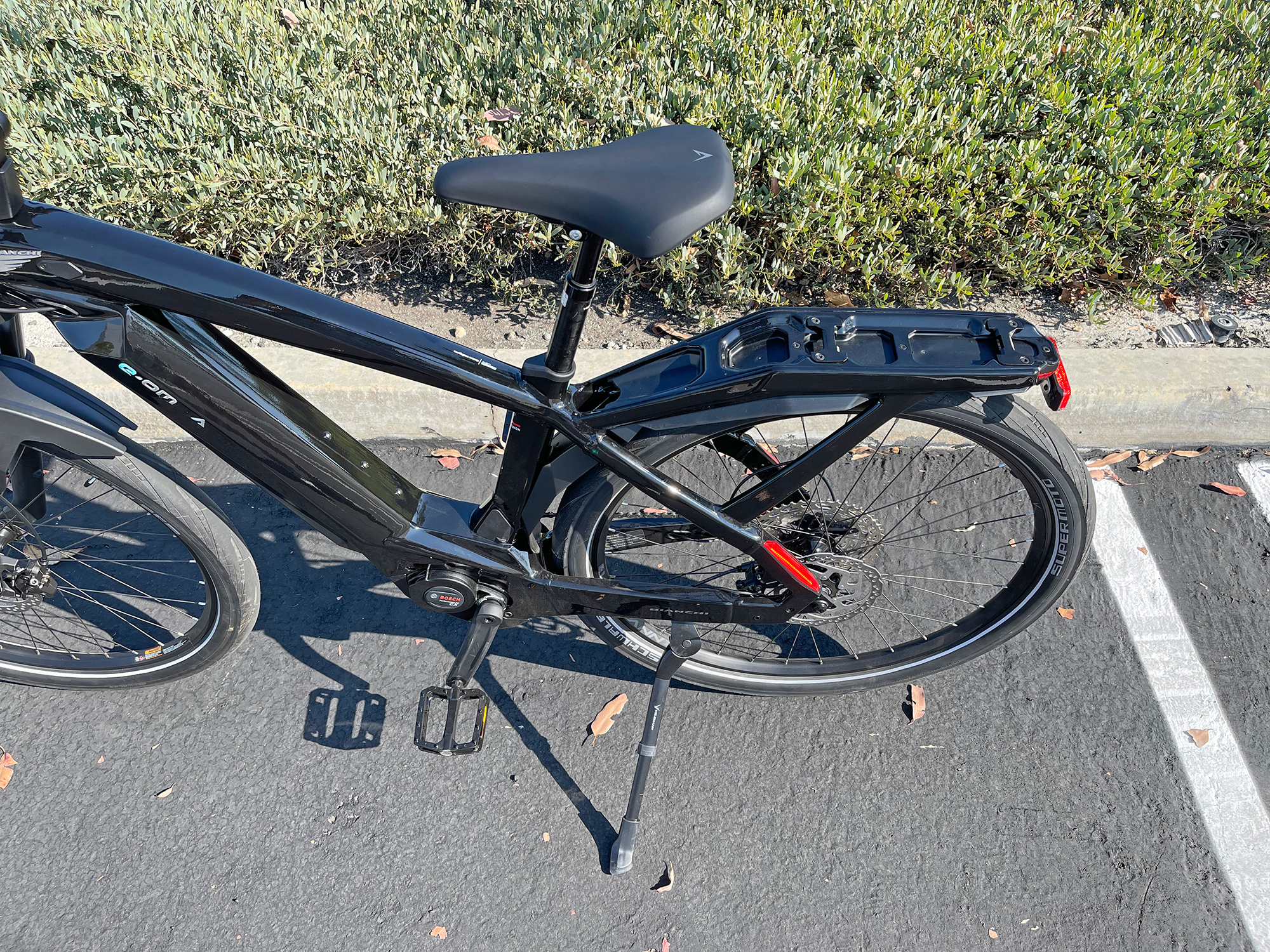
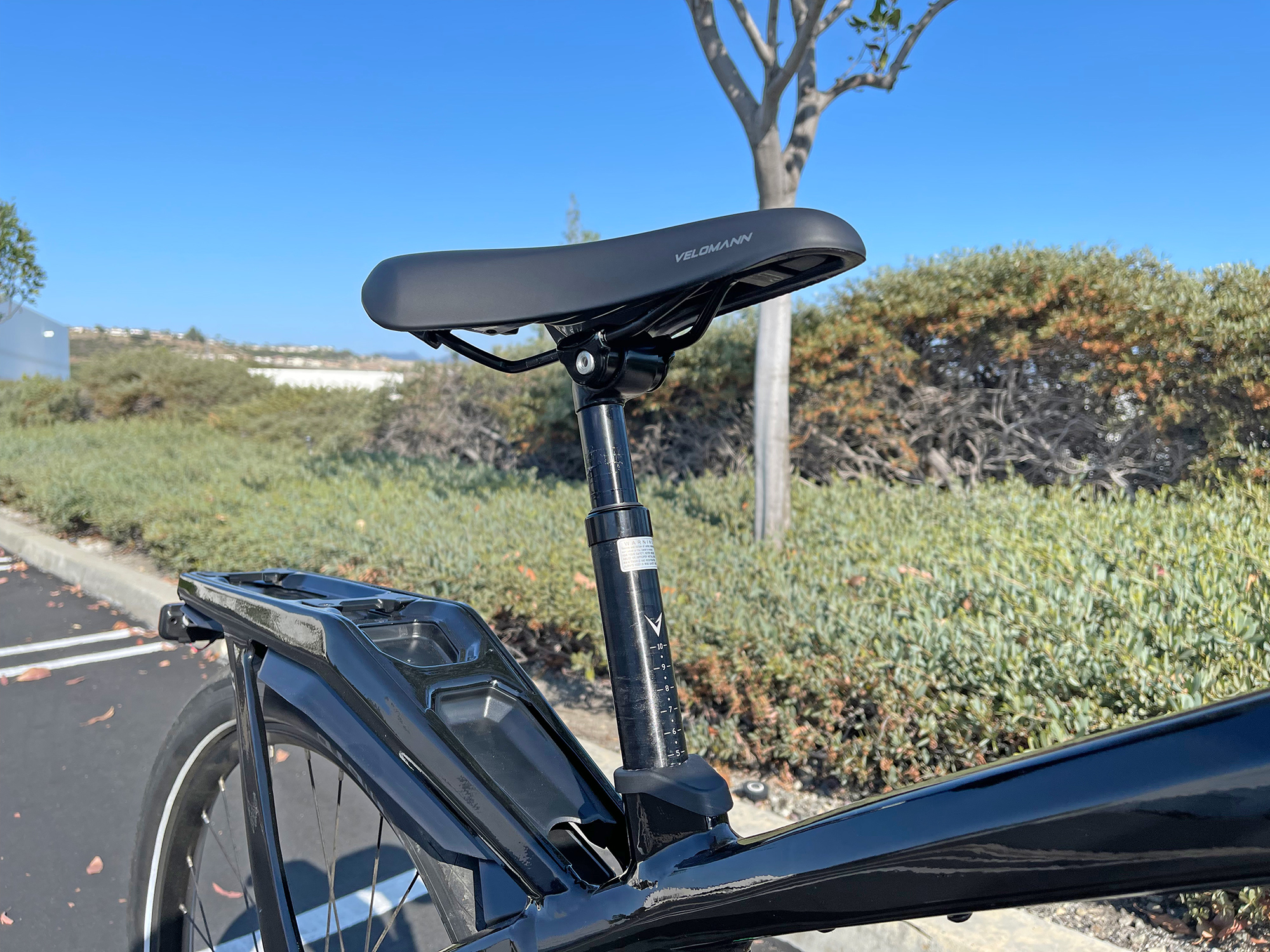
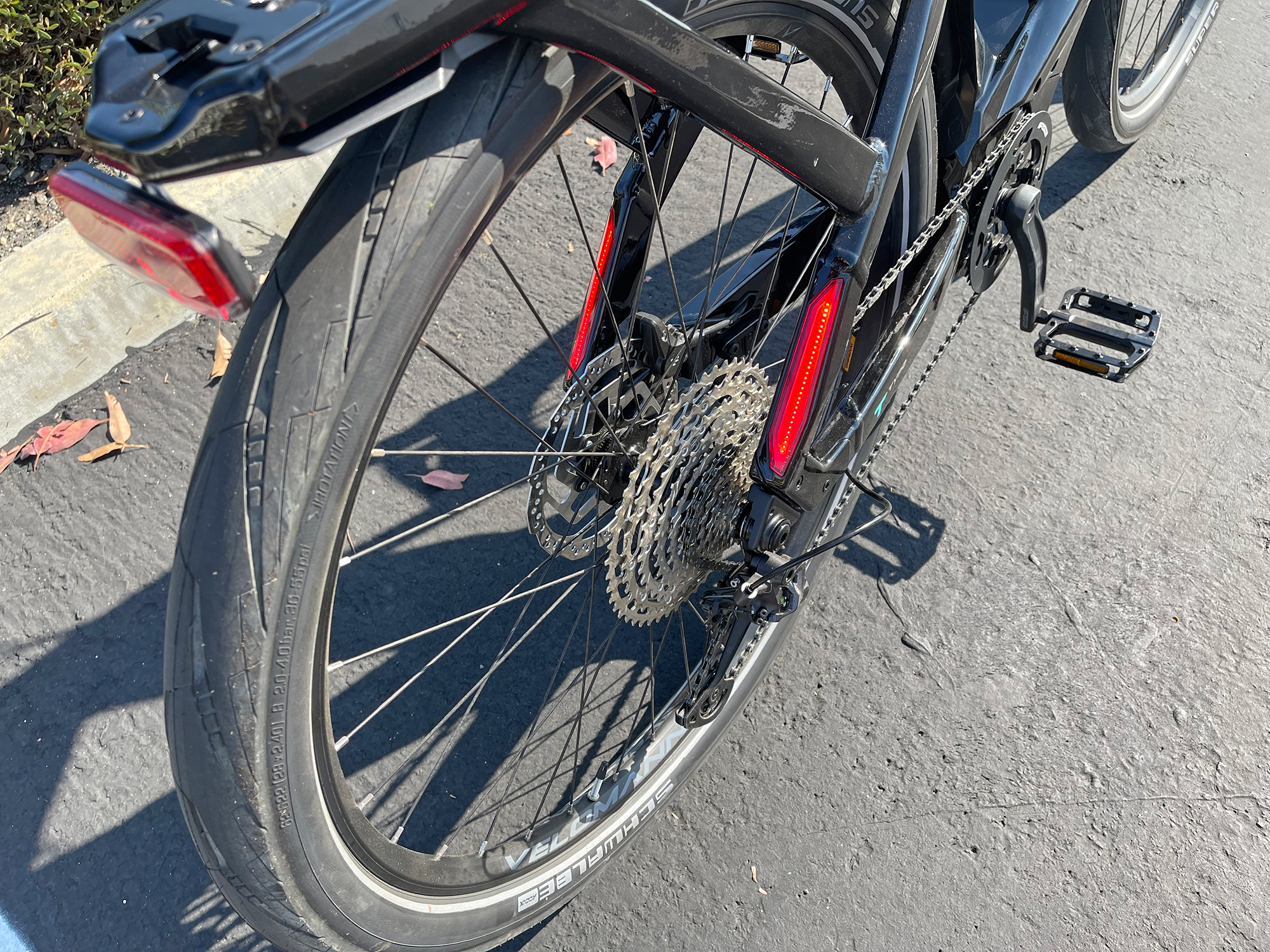
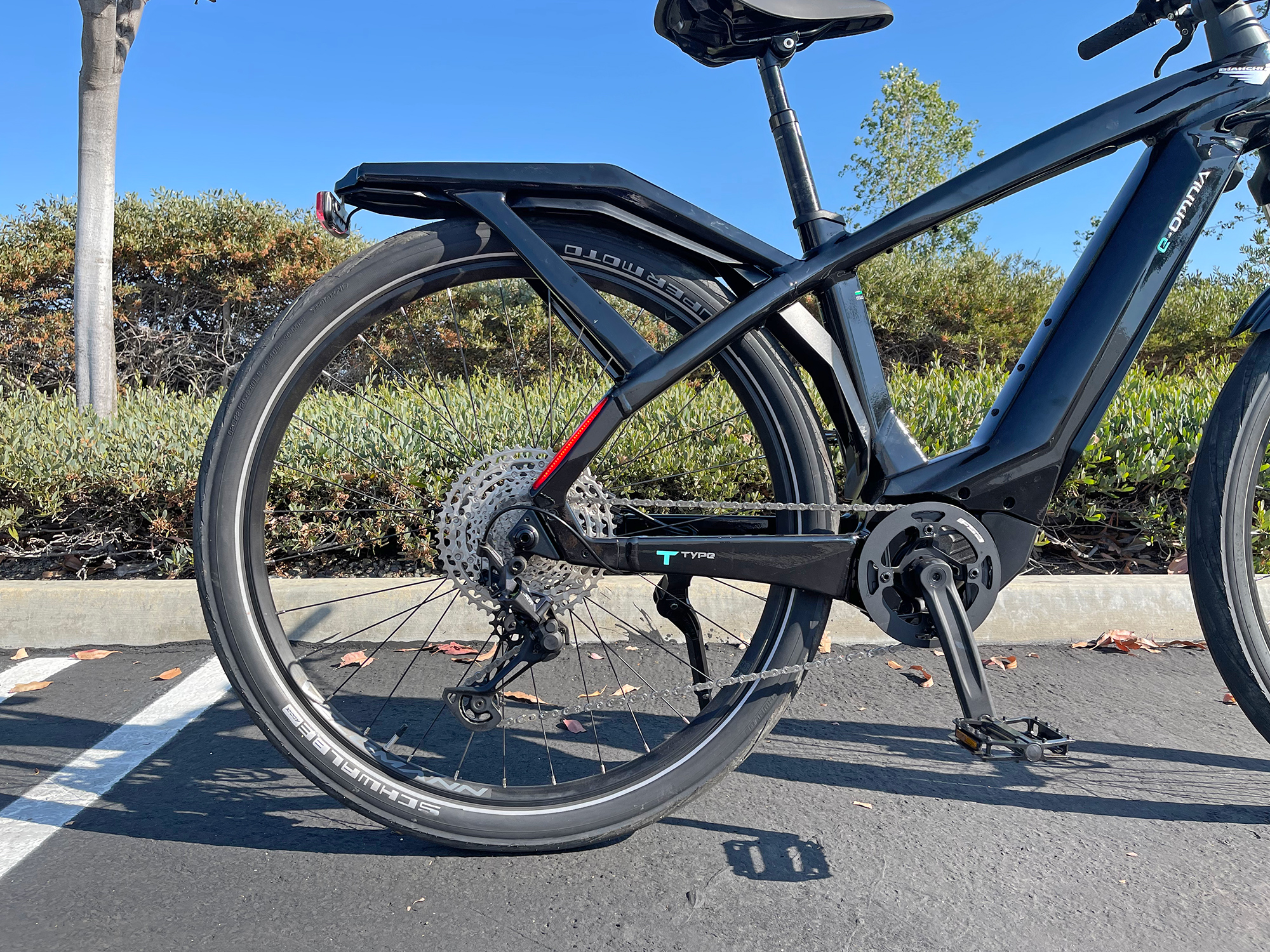
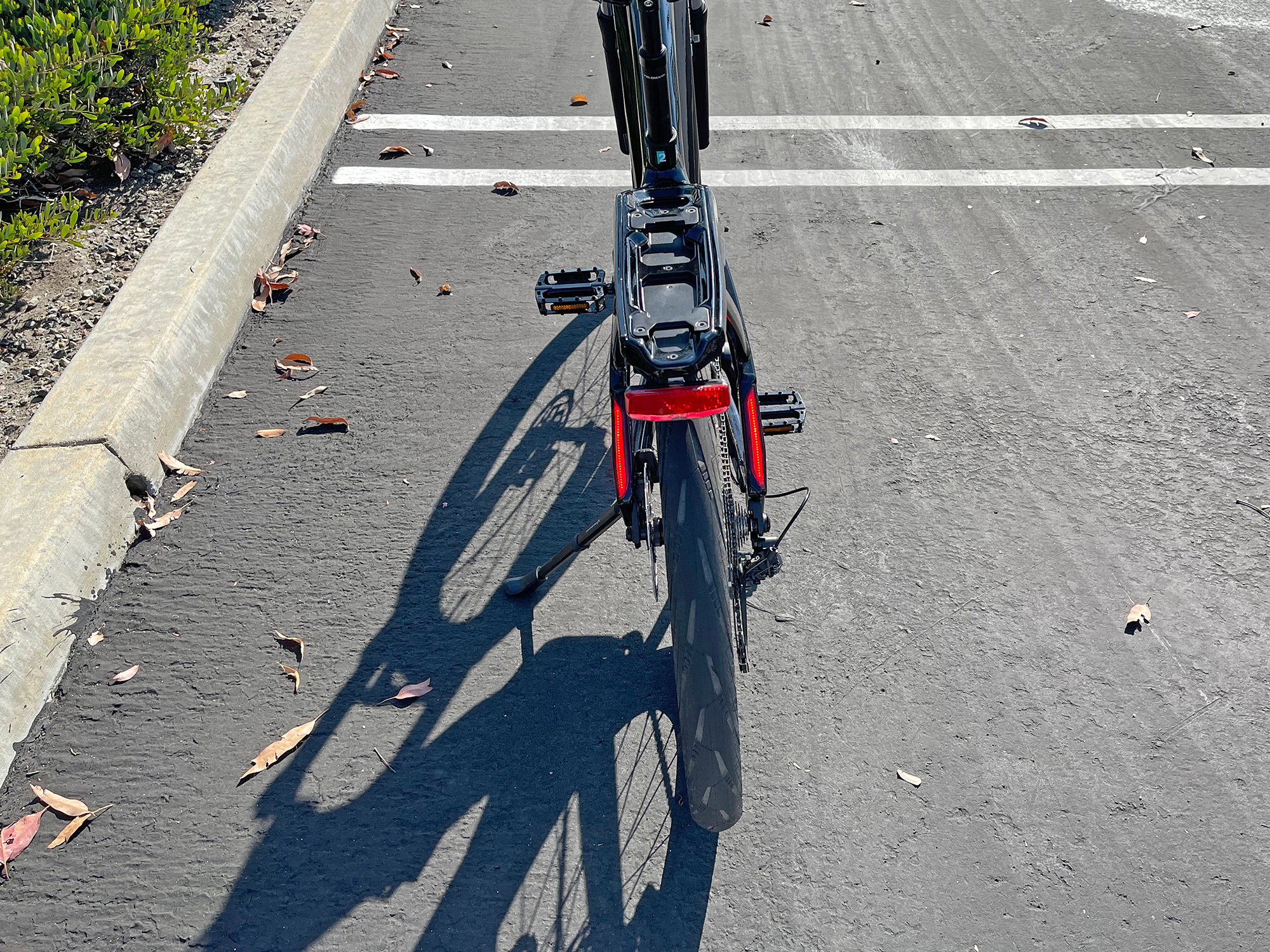
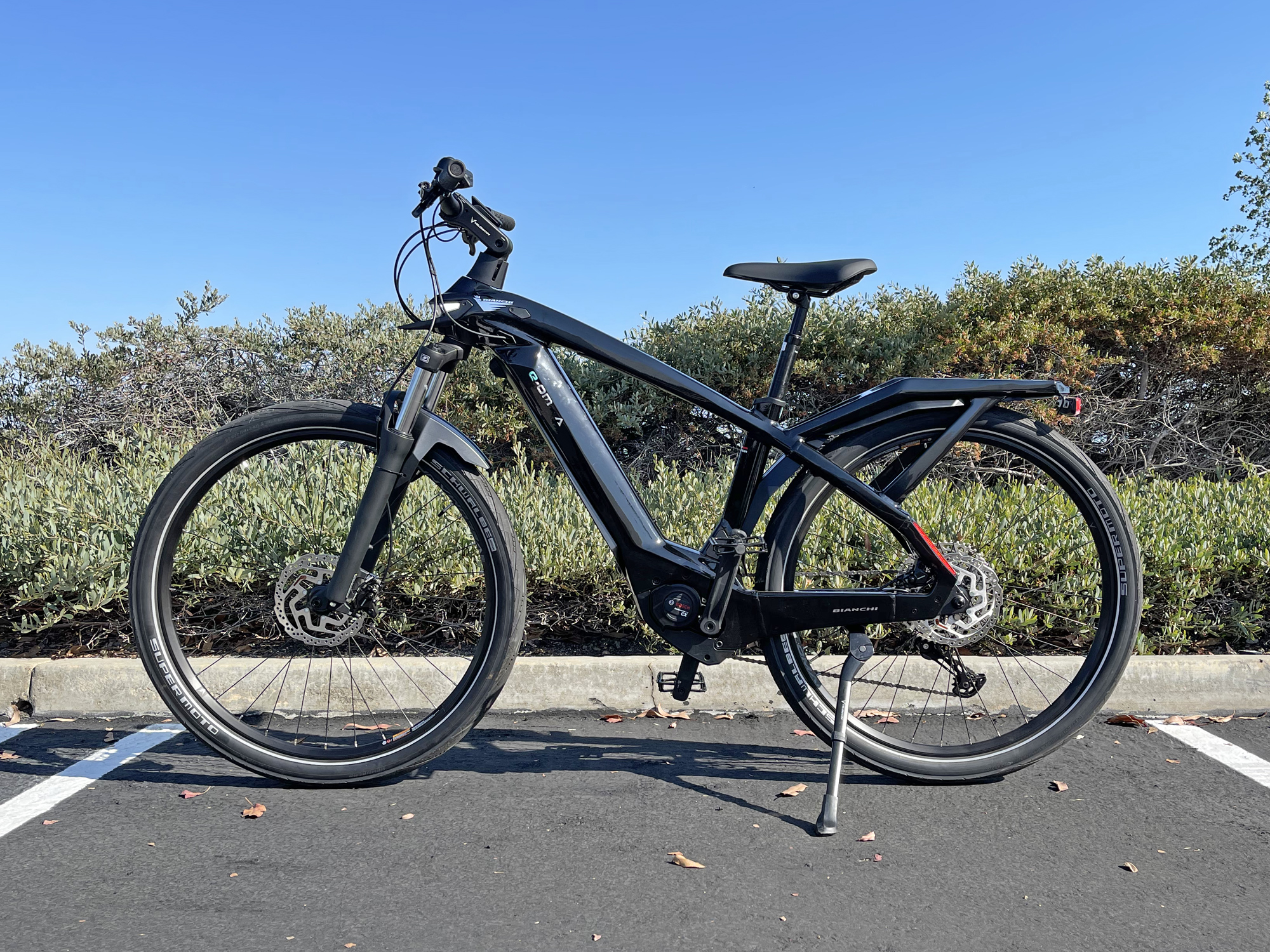
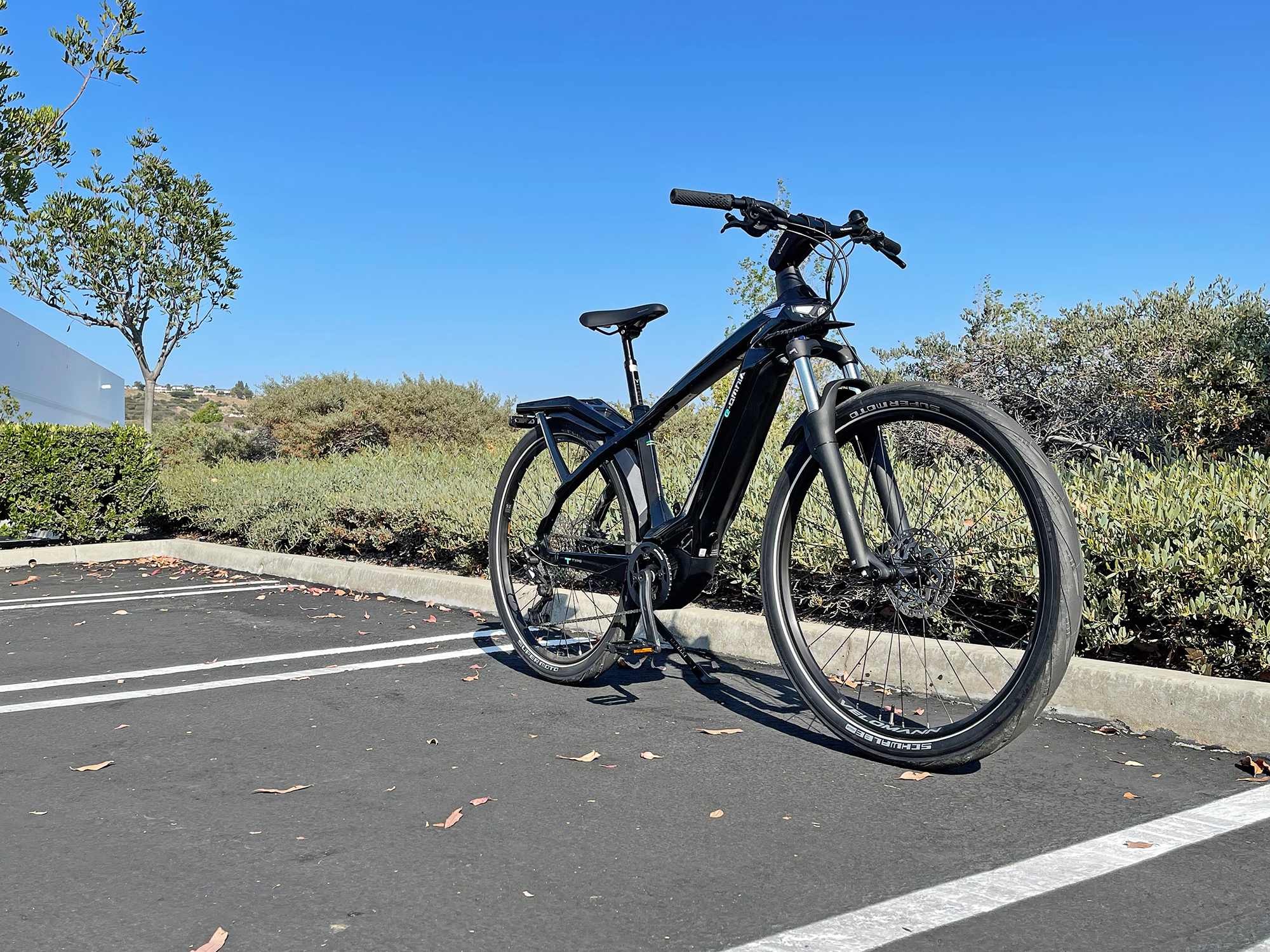
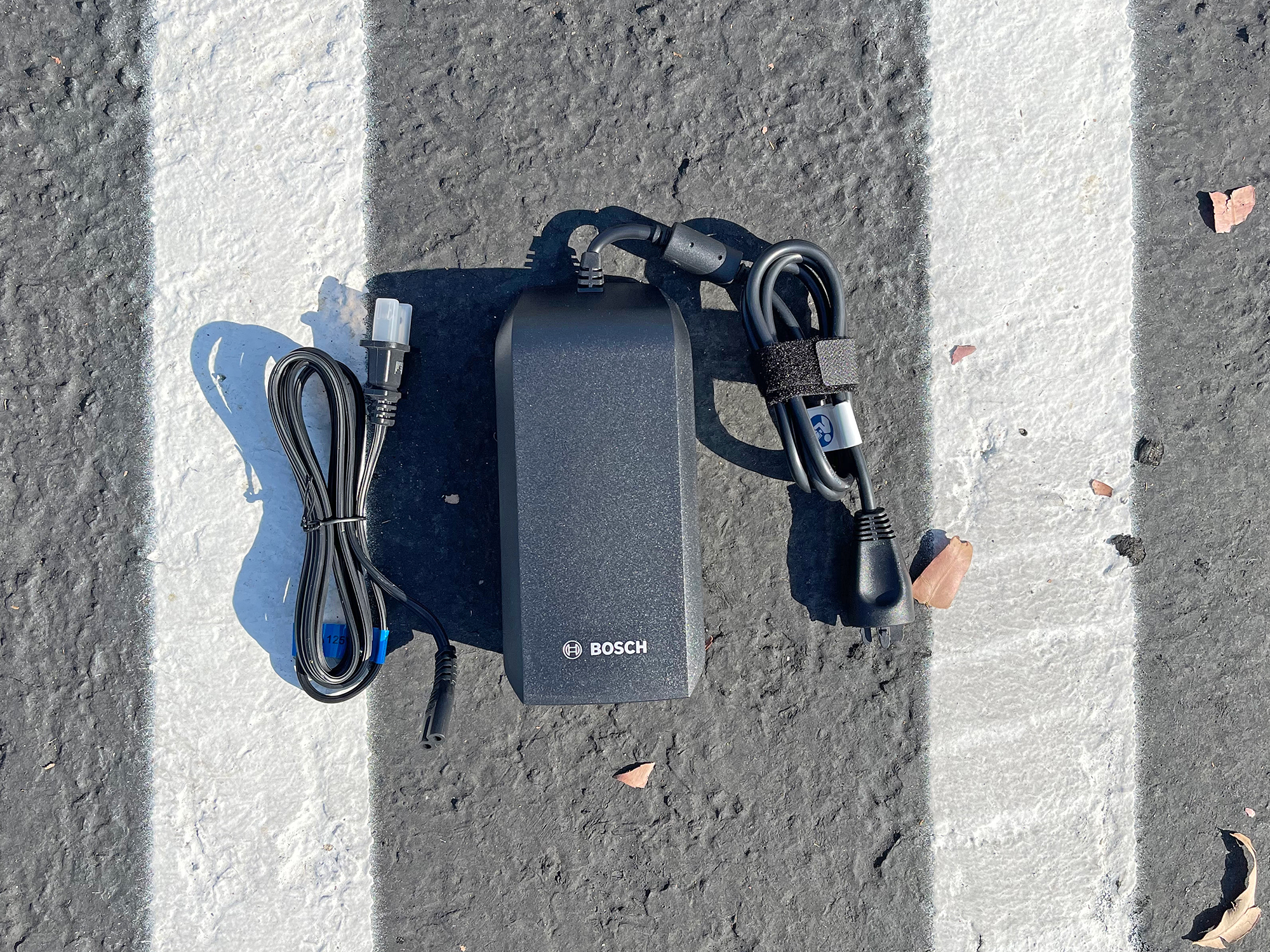
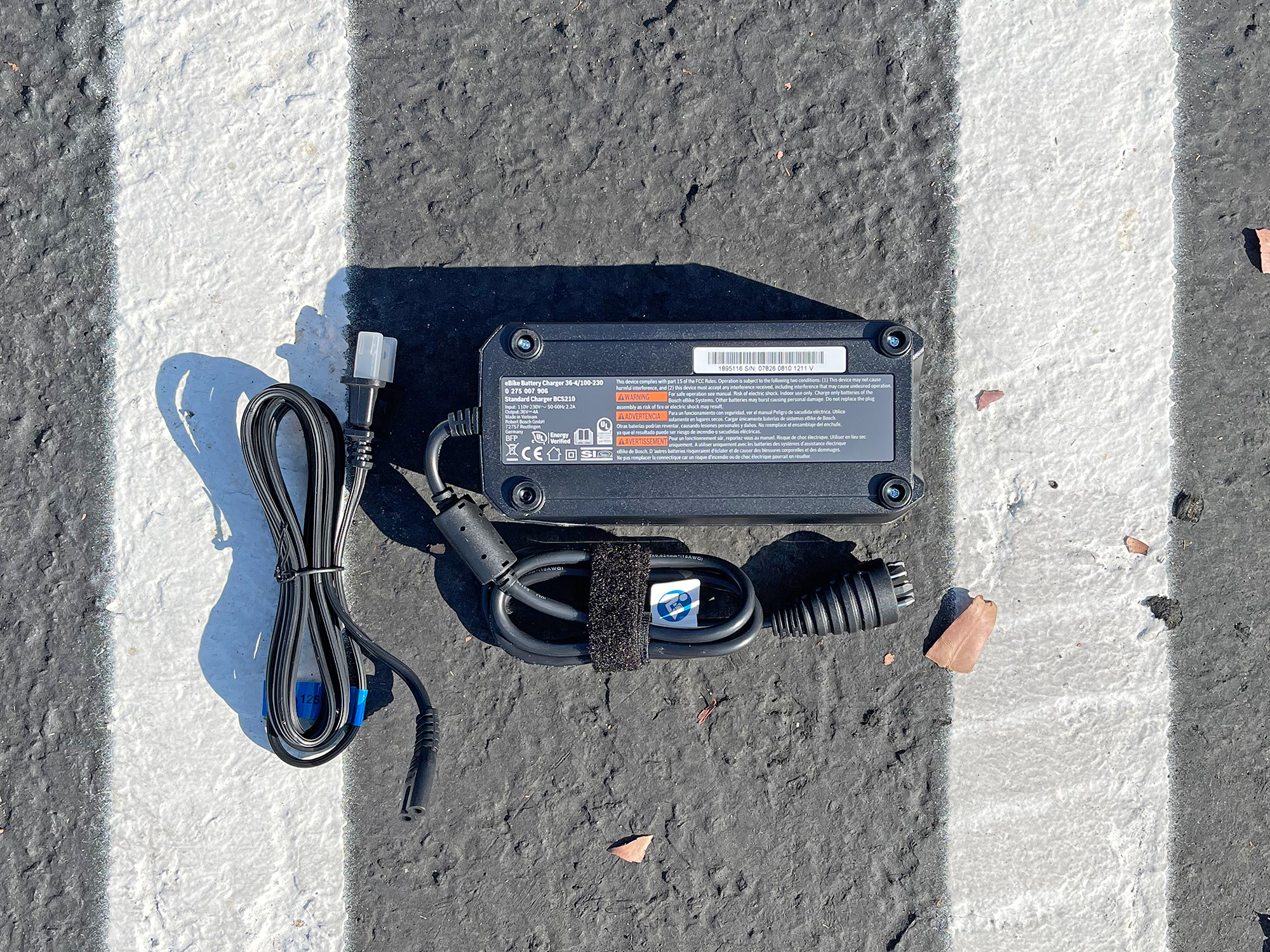
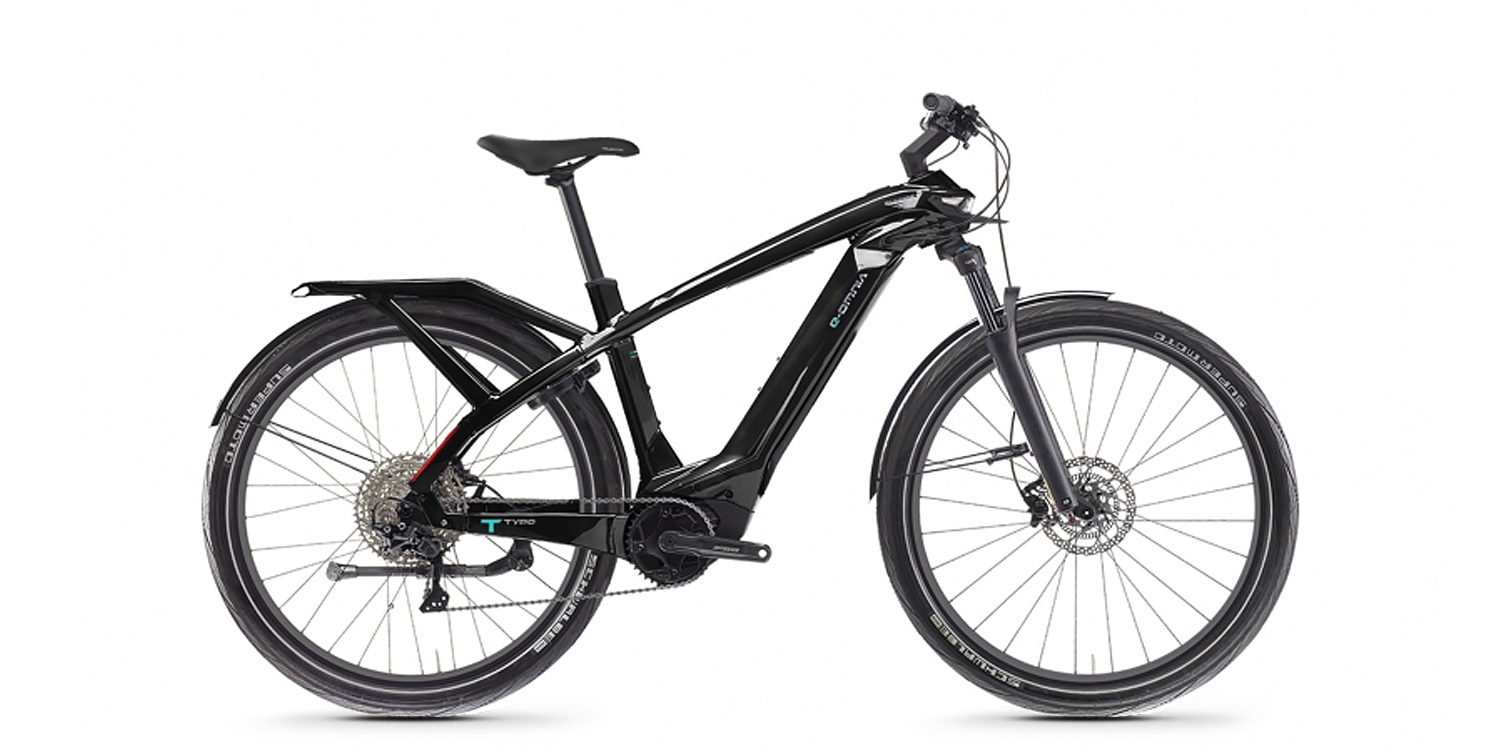
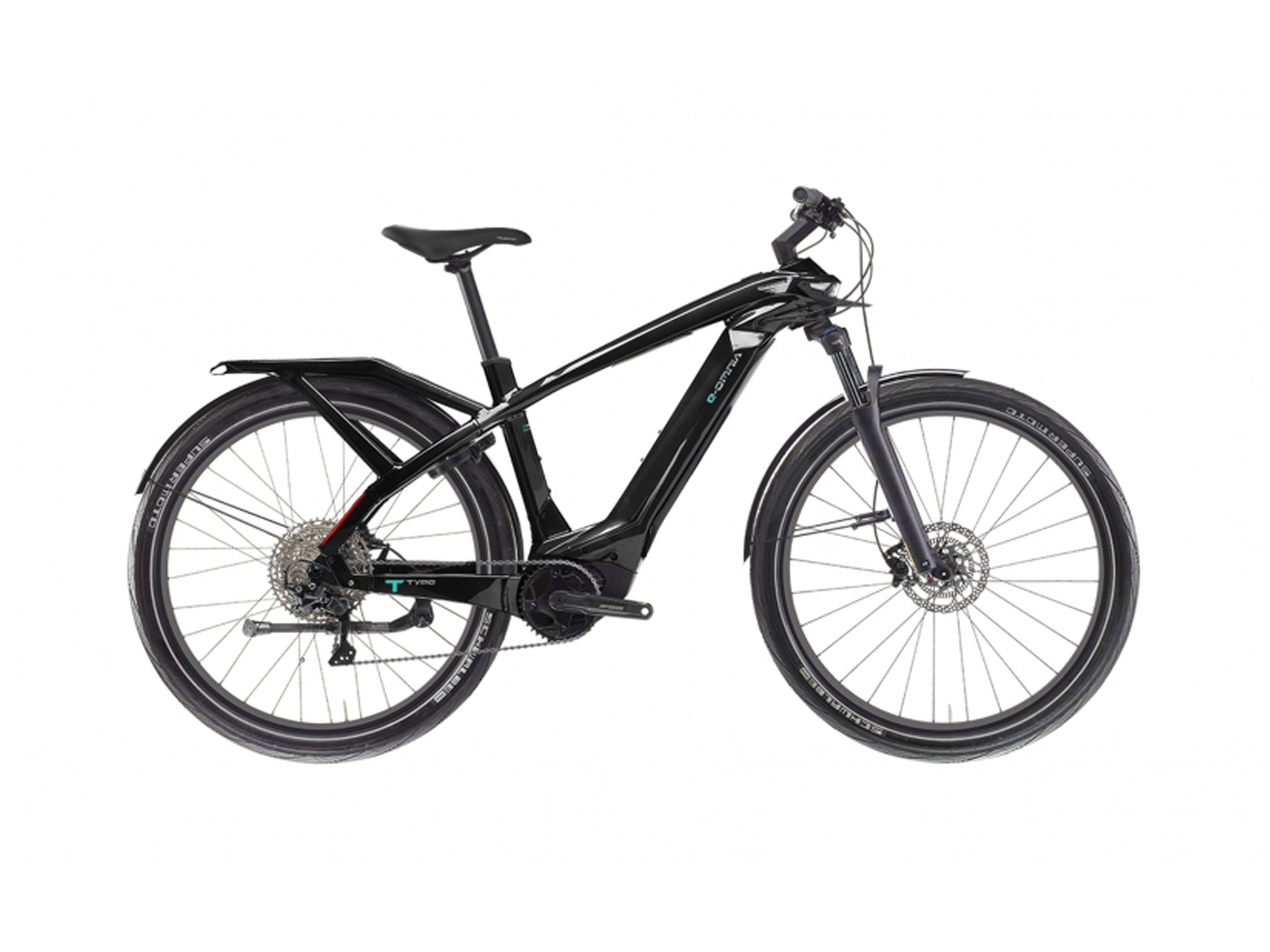
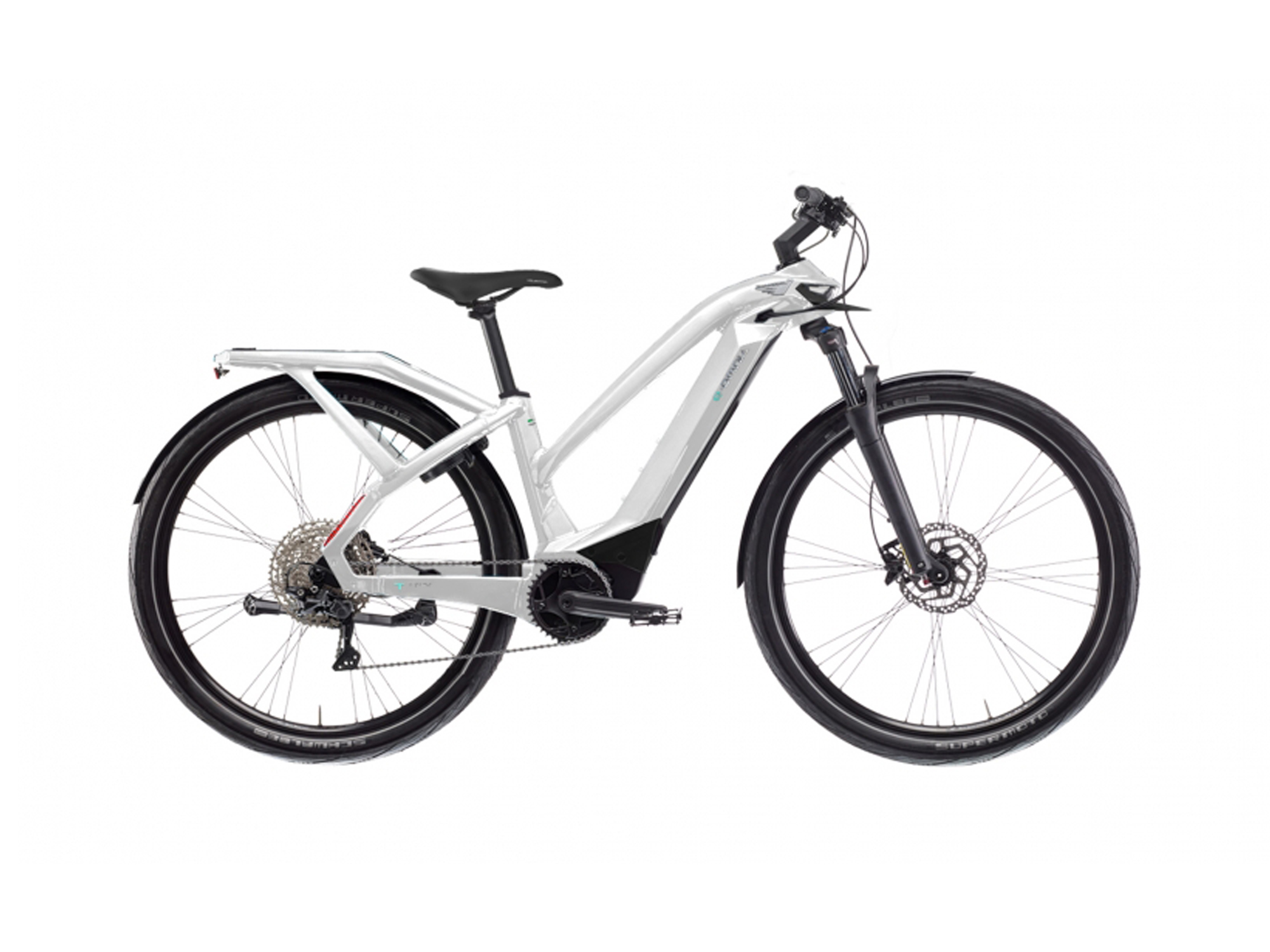

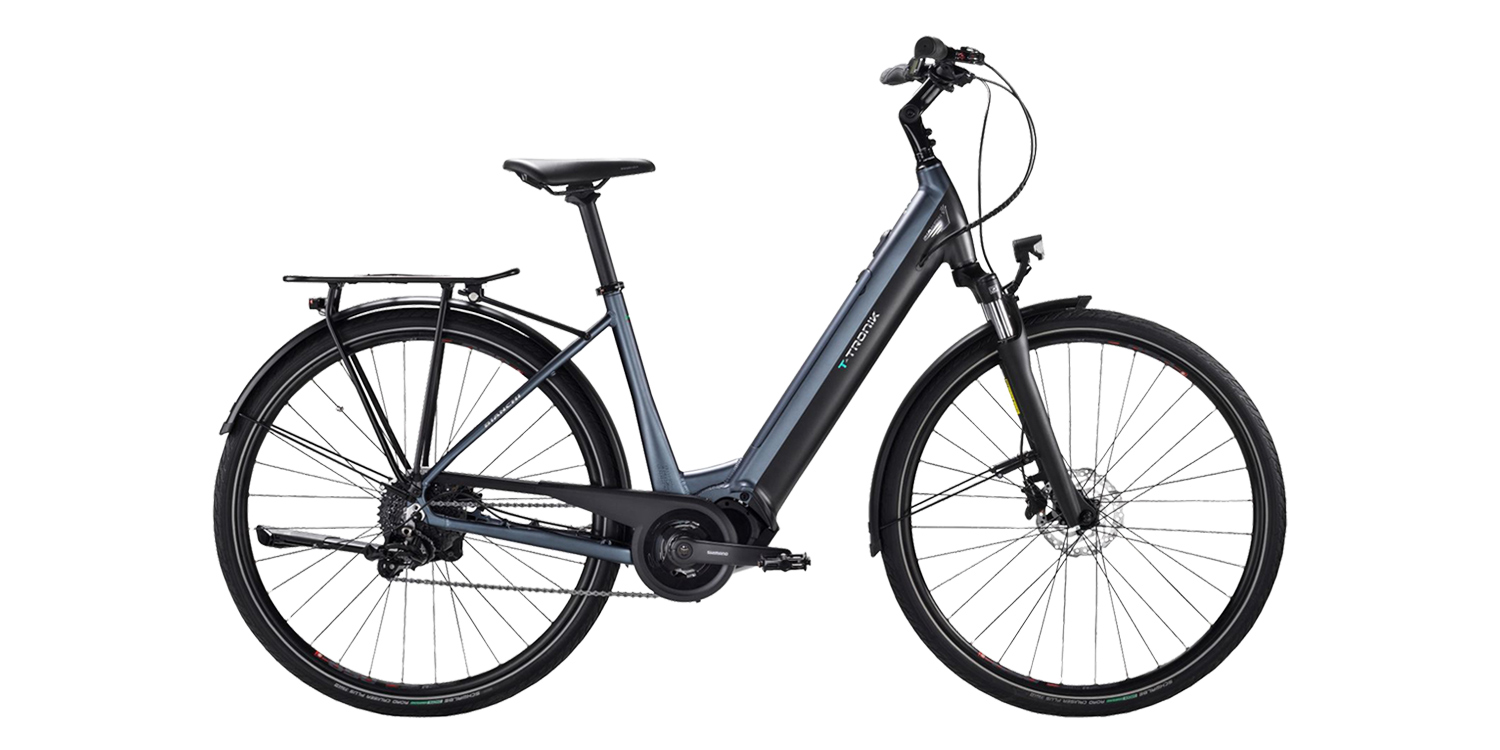
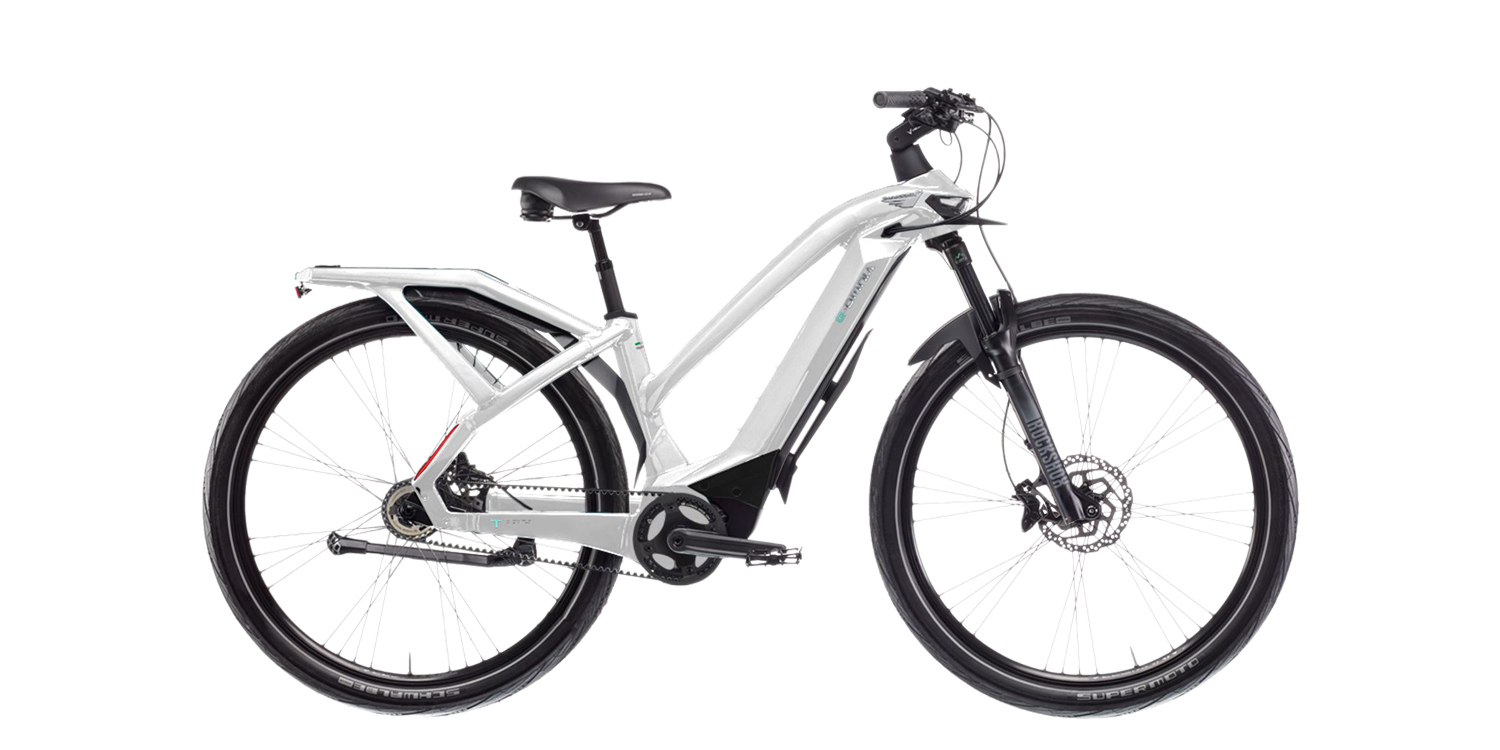
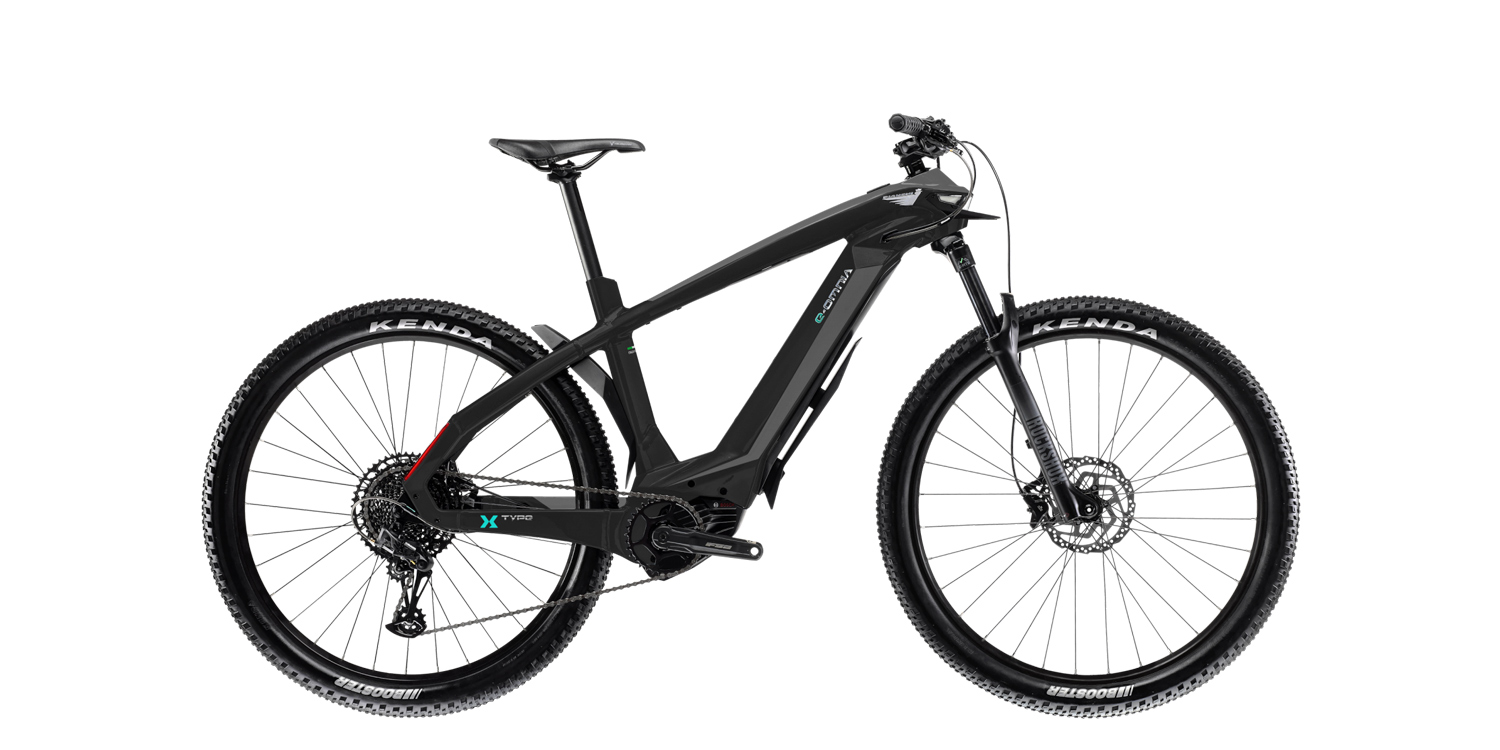
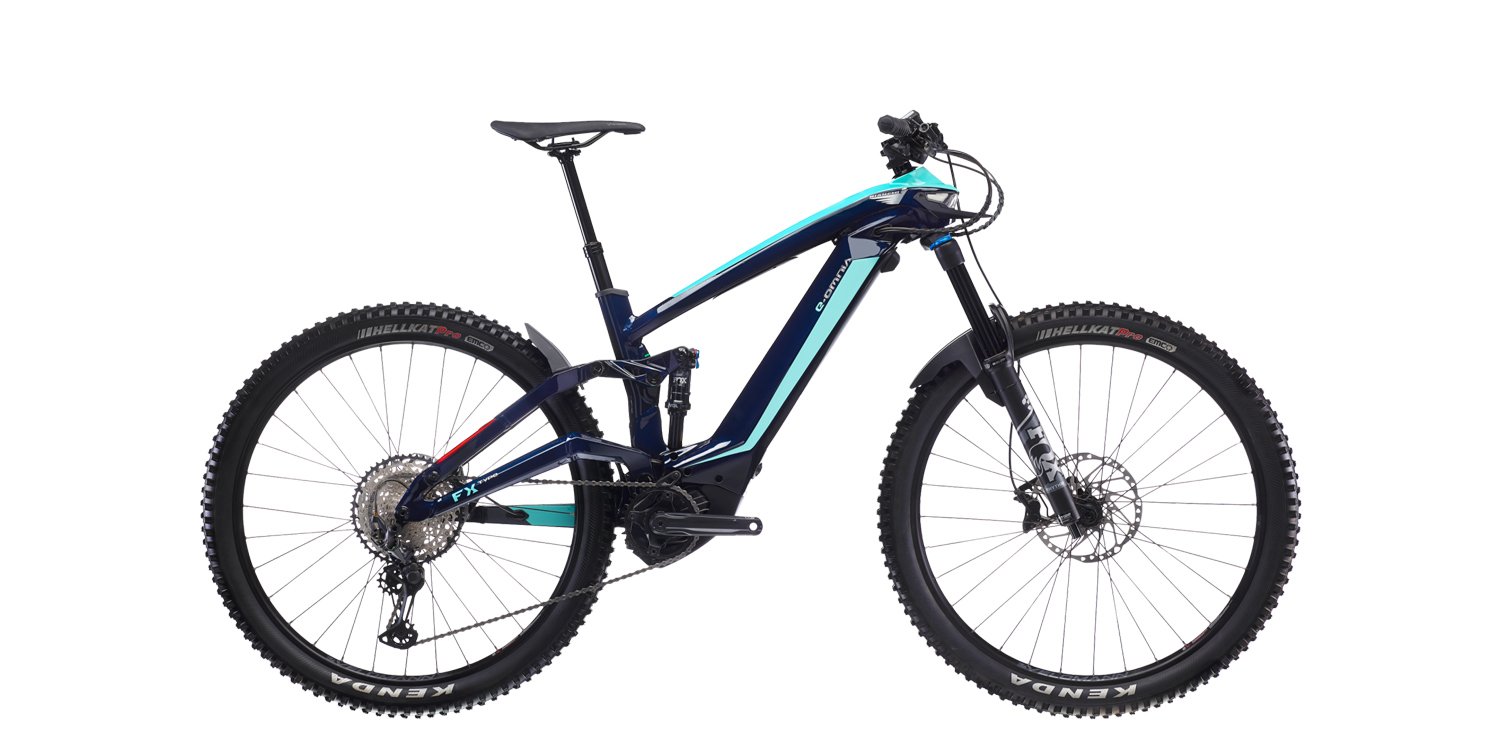
Peter says
Great review, thanks! I’m having difficulty deciding between the Bianchi E-Omnia T Type and Trek Powerfly FS 9 Equipped. Your thoughts?
Court says
Hi Peter! If you appreciate the style of the Bianchi, and their brand, it’s going to be tough to beat. I see it as a fancy import with unique design features. Trek is more “vanilla” and common, at least in the US and Canada, and I consider them to be the all around best major brand. I don’t think you can go wrong with the Powerfly FS and I’m a big fan of full suspension vs. hardtail because of the increased comfort and capability. For dealer support, proven design, and comfort… I’d go with Powerfly if I was buying for myself and price was not a consideration.
Tiffany Ray says
I purchased the T type and love it. One difficulty I’ve had is finding accessories for it with the proprietary rack. Do you know what type of panniers and bags work with the rack? Thanks!!
Court says
Awesome! I’m glad it’s working well for you Tiffany. The rear rack is pretty unique, I wonder if you could make it work with a Velcro strap style trunk bag or panniers that hang over the top like this? The fender plastic below the metal tubing makes it a bit different than other racks I’ve seen. Perhaps others will have an idea, I’ll think on it and let you know if anything else comes to mind Tiffany!
Nick says
I’ve bought one, love the bike but that battery cover rattles like hell and the unique luggage rack is too unique to be very useful!
Court says
Thanks for the feedback, Nick! Yeah, there’s a balance between how unique and custom something is vs. the price and how refined it is (how well it works). I like what Bianchi created here, but I can see how the rack would be a little awkward in some situations :)
kenneth baxter says
Love your feedback on the bike. I pick mine up this weekend in Holland!
Court says
That’s great Kenneth! I hope you enjoy the Bianchi E-Omnia!
Brian says
I replaced my home-brew pedalec with an XL Nexus E-Omnia T-Type. The bike I received had radius hydraulic brakes, 203mm rotors, and Vittoria 48mm e-randonneur tires. Still no word regarding Omnia specific bags, currently have a Topeak MTX trunk adapter zip tied to the rack.
Court says
Thanks for the update, Brian! Sometimes the bikes I’m loaned for reviews are samples or pre-production and the parts change a bit during launch. I have’t heard or seen much for the Bianchi products since covering this one. It certainly is a unique product, and a brand that is cool! Maybe supply chain has impacted the parts and caused their bags to come out slower or be canceled. In any case, I hope your E-Omnia works well for many years to come!
Tiffany says
I was able to purchase some panniers from Oregon Ebikes. They were able to get them directly from their Bianchi contact. I love the paniers and the system. It allows you to easily remove them. I’m new to biking, but prefer this system over the velcro straps on my husband’s trunk bag we purchased for his Bulls bike.
Court says
That’s great, thanks for the source on the panniers Tiffany!
Brian says
So far it’s done quite well thanks! I have about 600mi on the bike so far. Less powerful than the home-brew, but the Bosch activation system is a lot smoother. I’m pretty sure I’m the only one that’s bought a Bianchi e-bike from my local dealer and getting support has been interesting. The limiter is still set for the larger 2.4″ tires, hopefully that will get resolved after the holidays.
Being a larger person—over 6′, 220lbs—the air shock fork has been nice. One of the biggest issues I had on the home-brew was dealing with the effects of vibration of 28mph for 90+ minutes a day on poor roads, and the fork seems to help with that. I found the suspension seat post counterproductive; replaced it with a narrower saddle and a good carbon seat post and have been more comfortable since. The seat post is a huge upgrade.
The tires as equipped have been extremely flat resistant. During the first 50–100mi of riding they were very slick in the rain and had almost an egg shaped profile; having worn down a bit they have much better wet grip. I figured out the tensioning system for the belt, and was struggling to keep the belt tensioned, but I found the Abus lock was the culprit. With the lock mounted at the furthest possible point it still does not clear the rim well enough to maintain tension.
Related, I’m sure, the rim profile of the wheels I have appear deeper than the original spec. Most likely helps make for stronger wheels, possibly better wind profile. I do get pushed a little in a cross-wind but not excessively. The Nexus e5 rear hub seems to handle upshifts under power smoothly, makes a clunking noise if I downshift while pedaling. I try to avoid that situation.
The radius brakes are competent but the levers are disconcertingly squishy. I’m going to see if I can get my LBS to top off/bleed them because they don’t inspire confidence. I added SQLab Innerbarends to get a “hoods” position. Toyed with the idea of pursuit bars but the twist shifter isn’t really compatible.
Thanks for the info re the Panniers, Tiffany, I’ll ask my LBS again if he can locate anything.
Court says
Hi Brian! It sounds like you’ve really got the bike dialed in nicely. The carbon post, narrower saddle, and awesome “inner bar ends” from SQLabs are awesome. I hadn’t seen those before. I’ve seen persuit handlebars before on city bikes and fixie creations that friends made, but I see how getting the shifters and everything setup could be a challenge. Thanks again for your detailed comments!